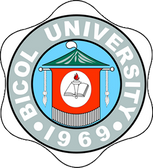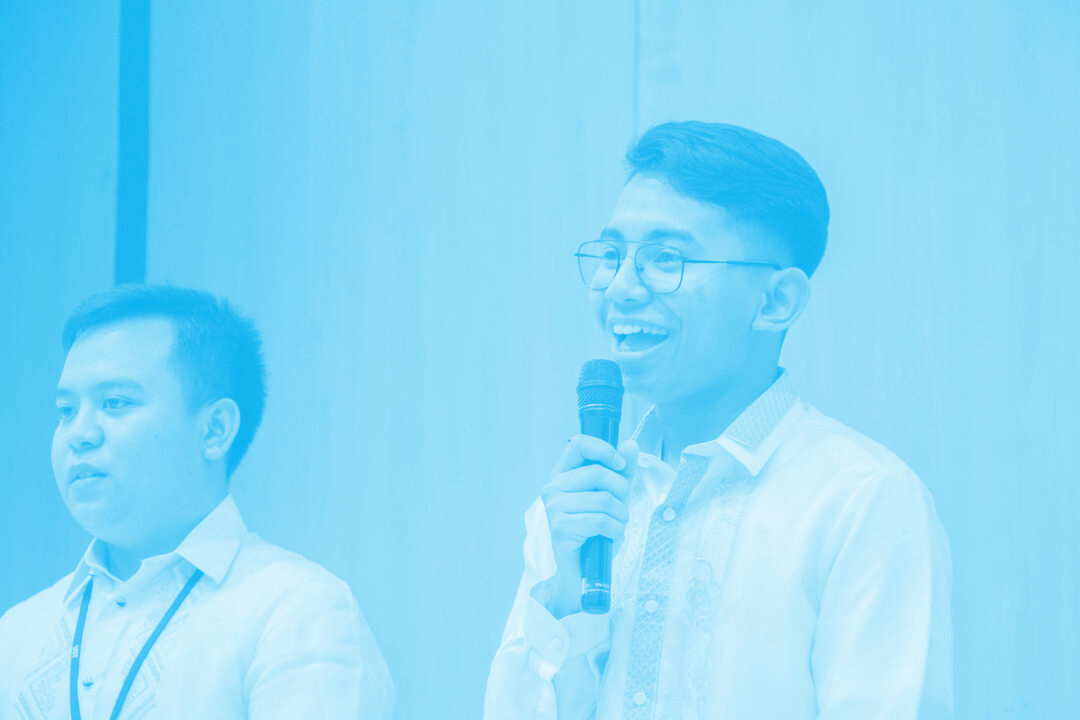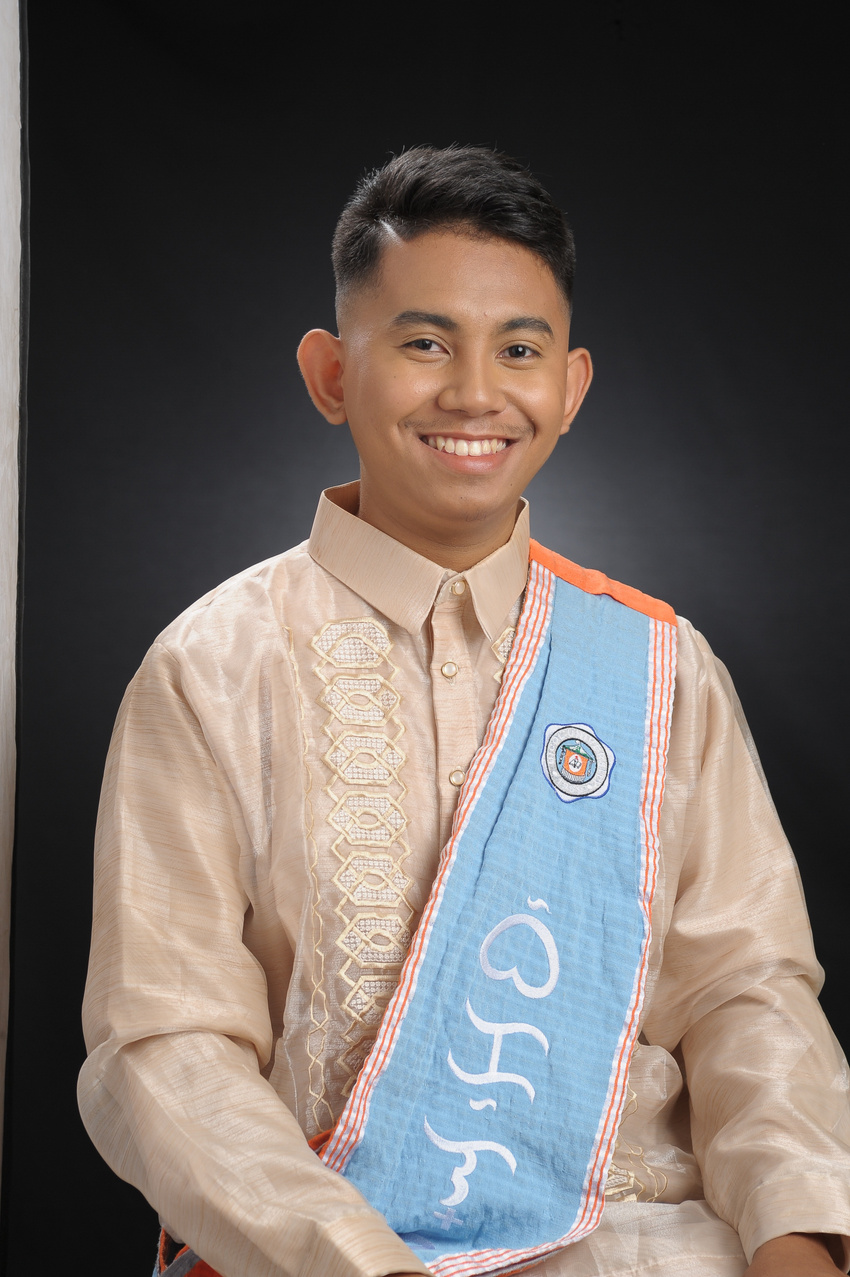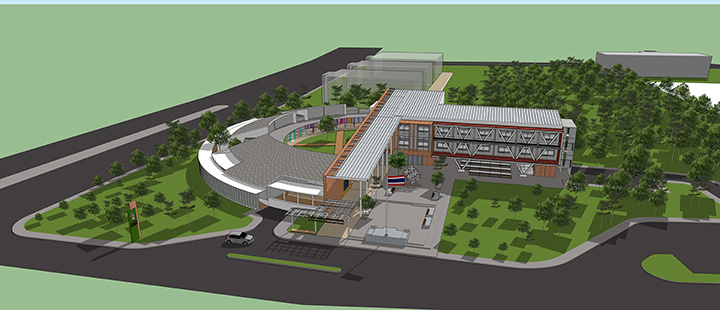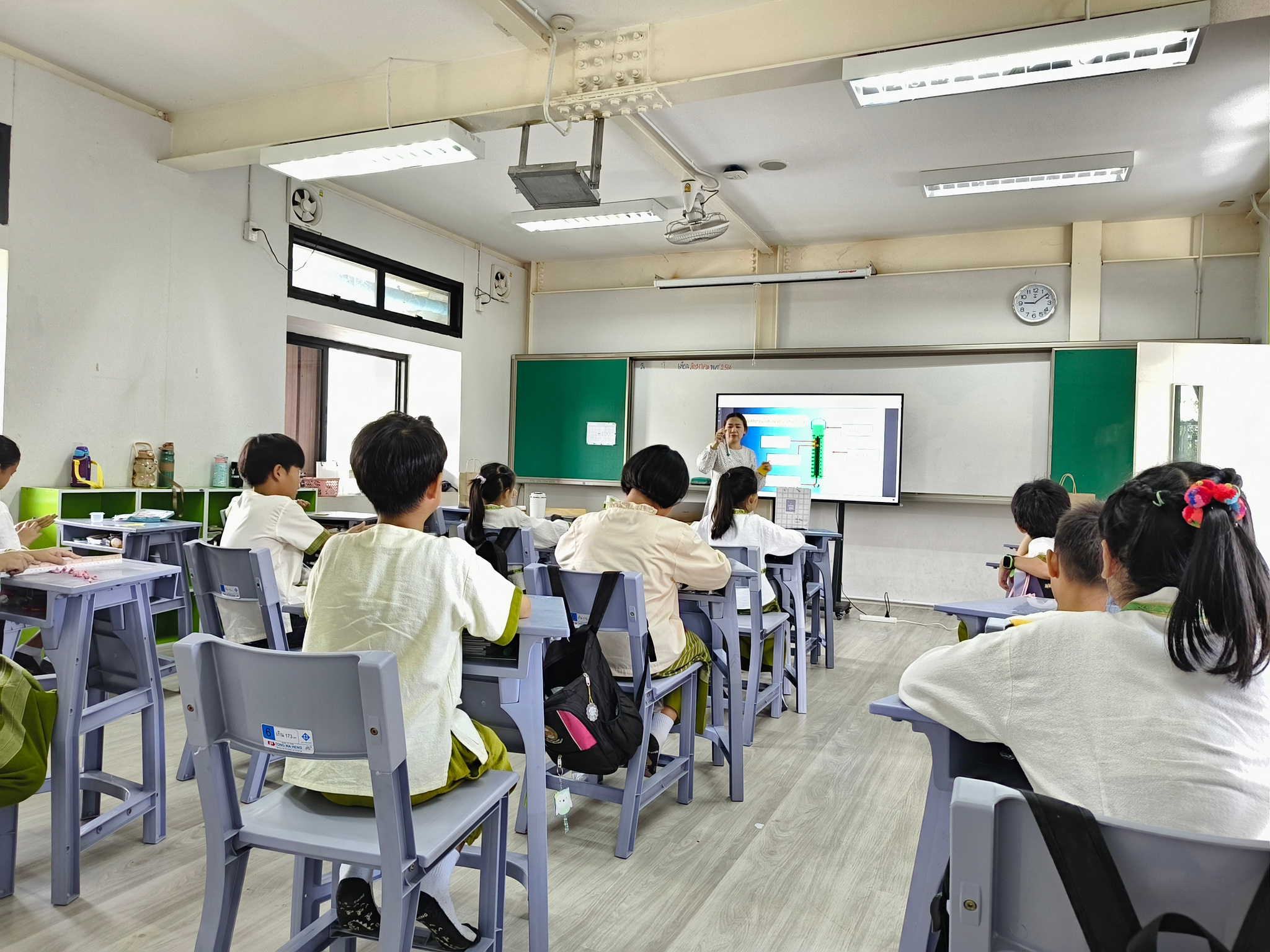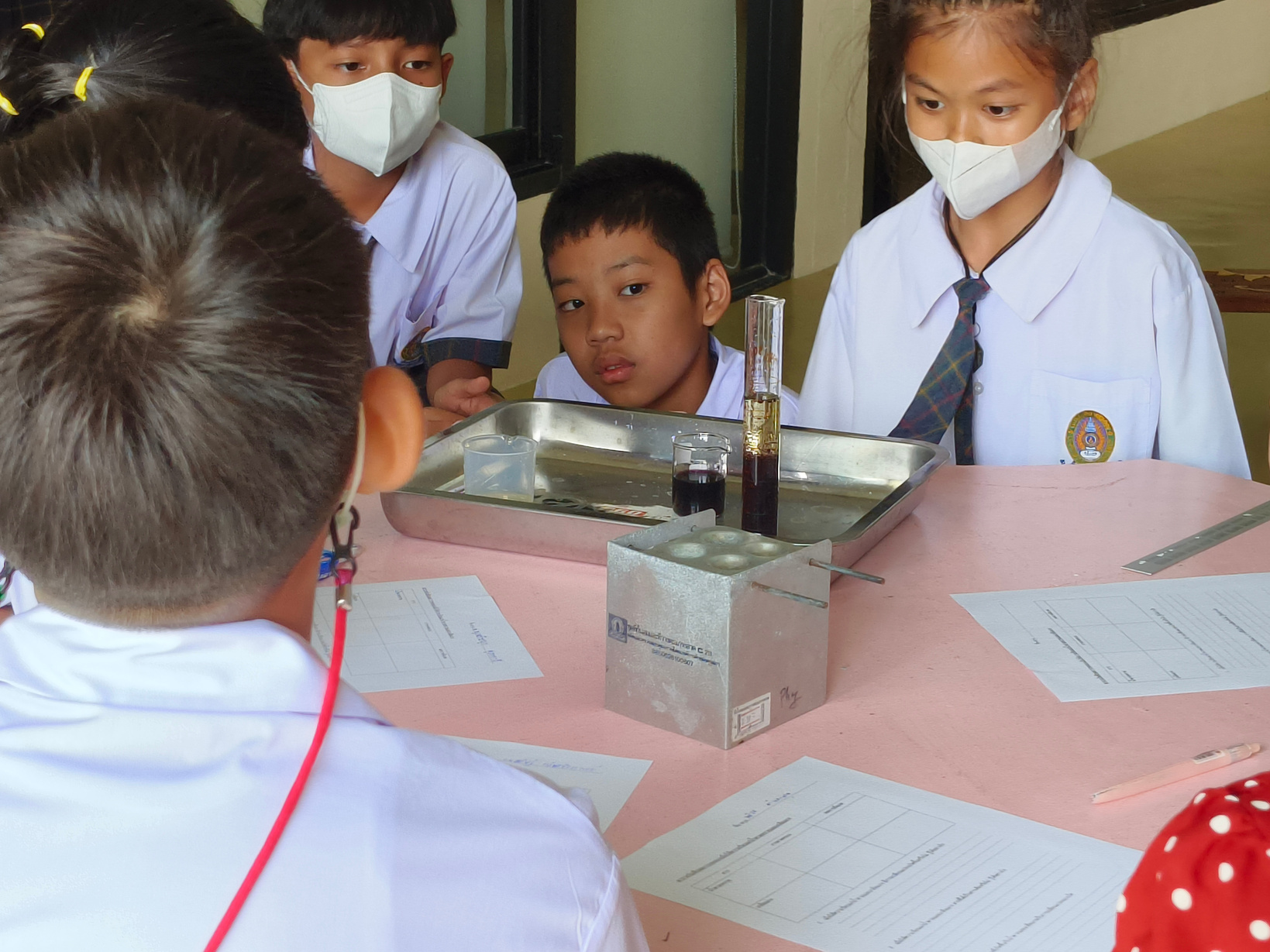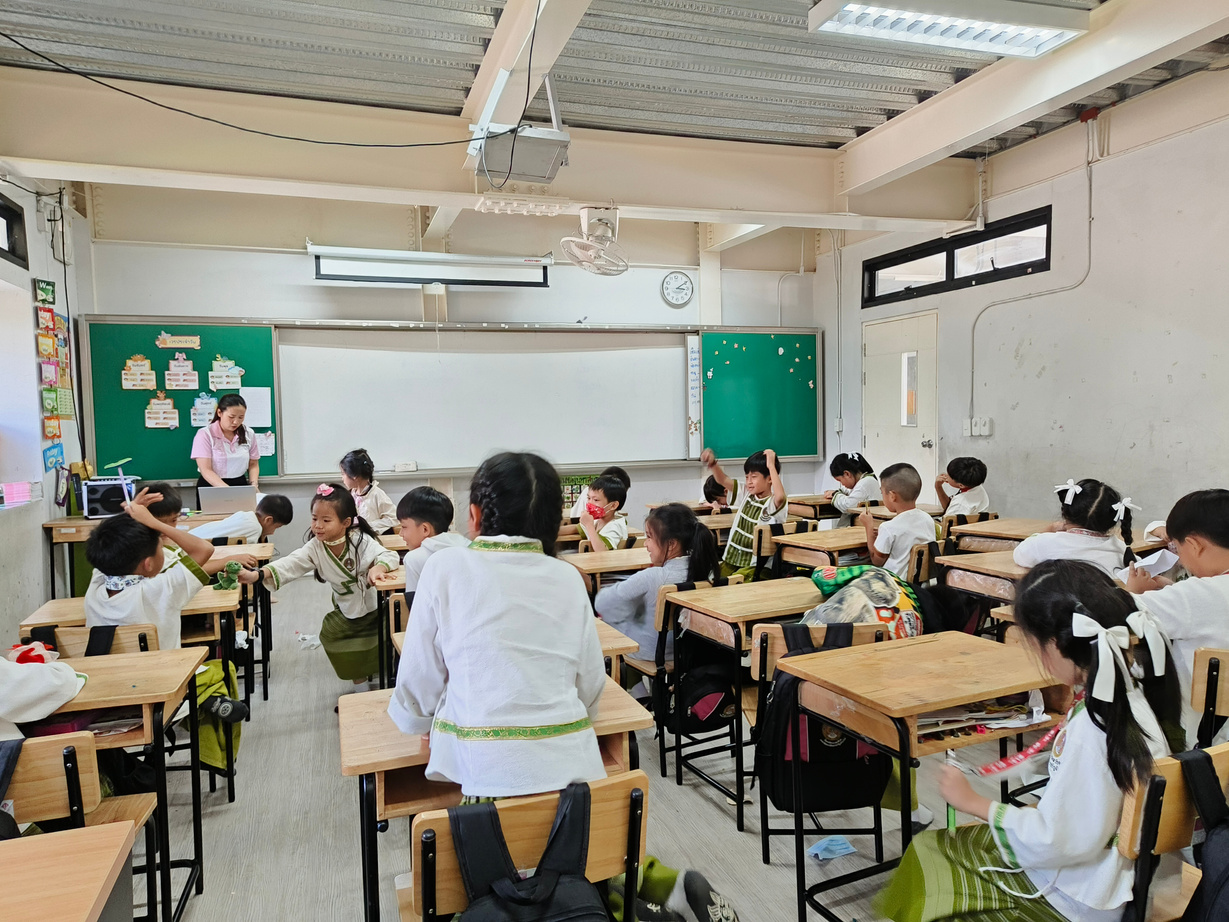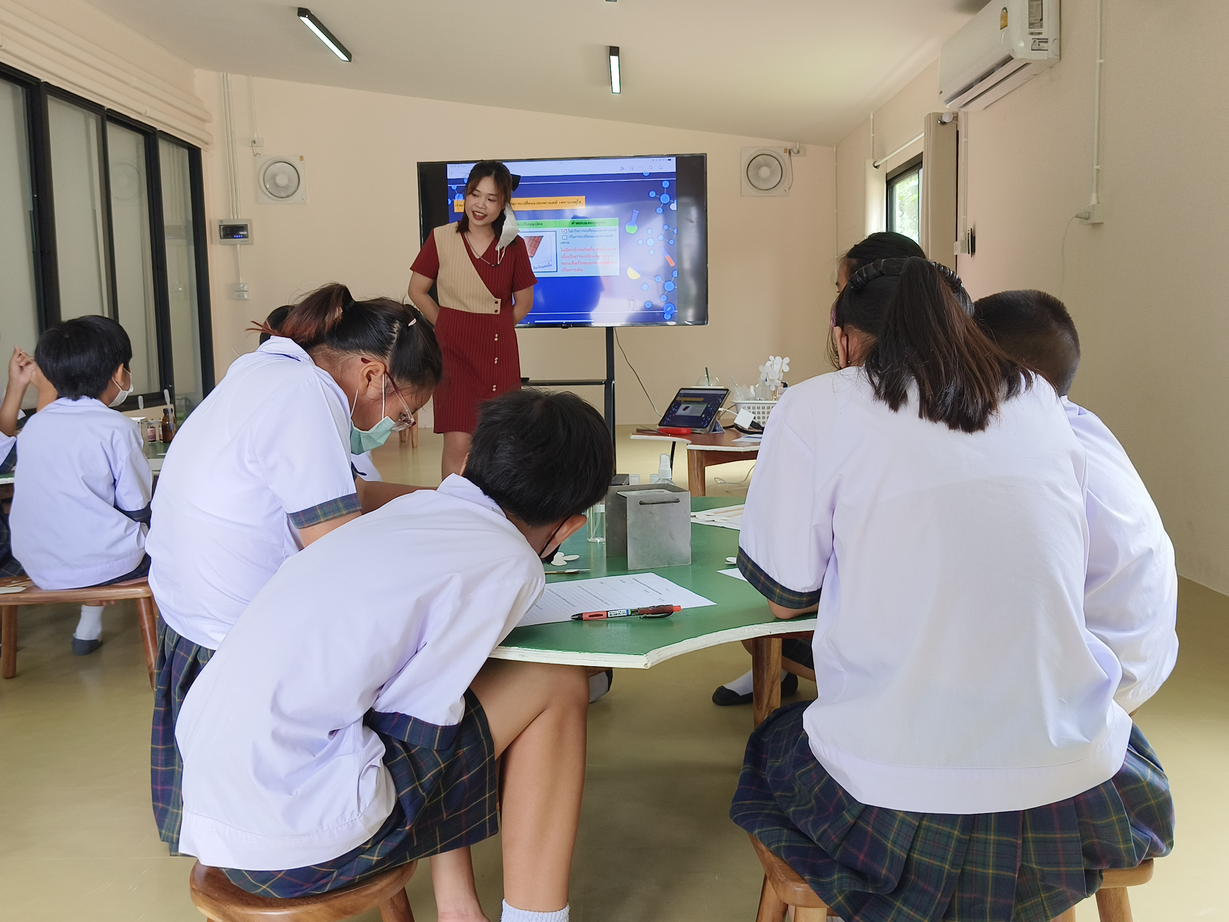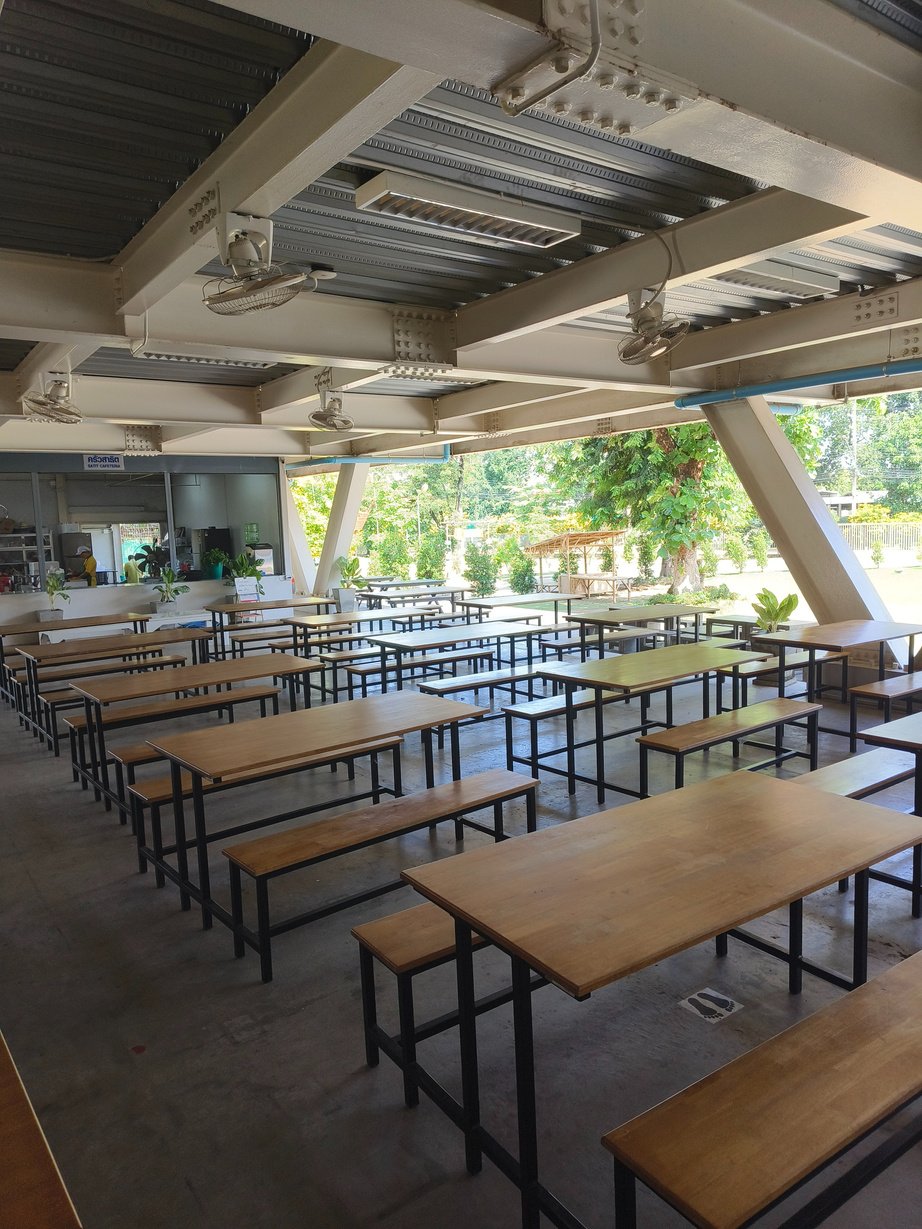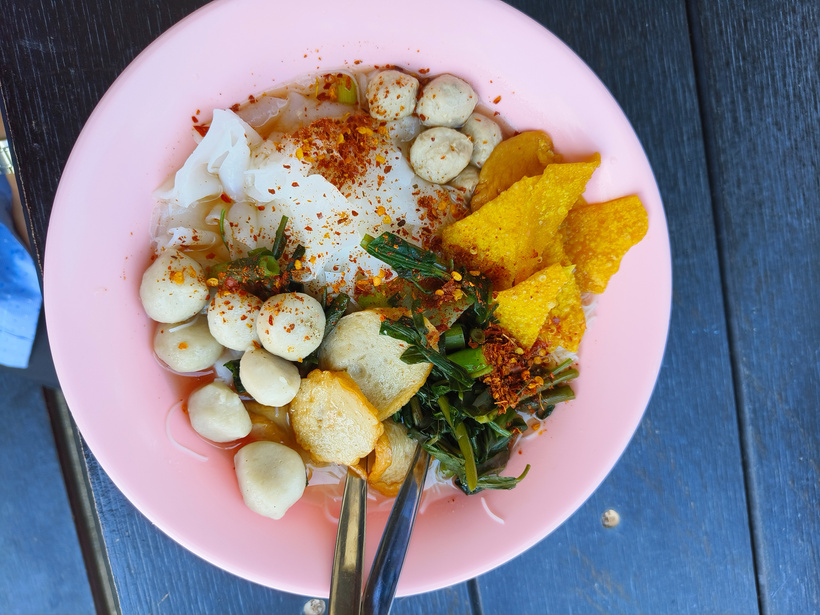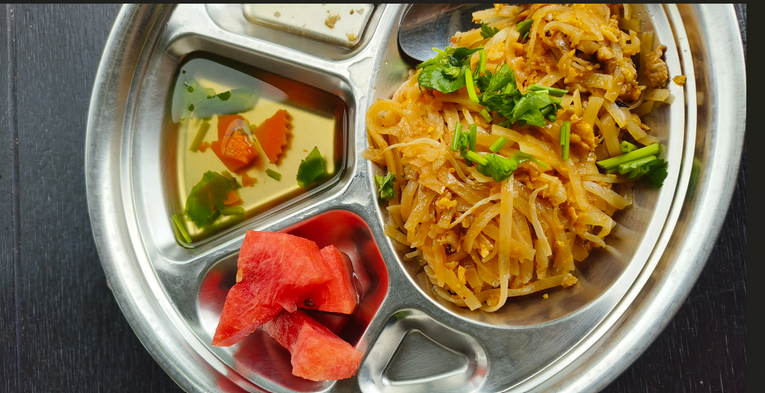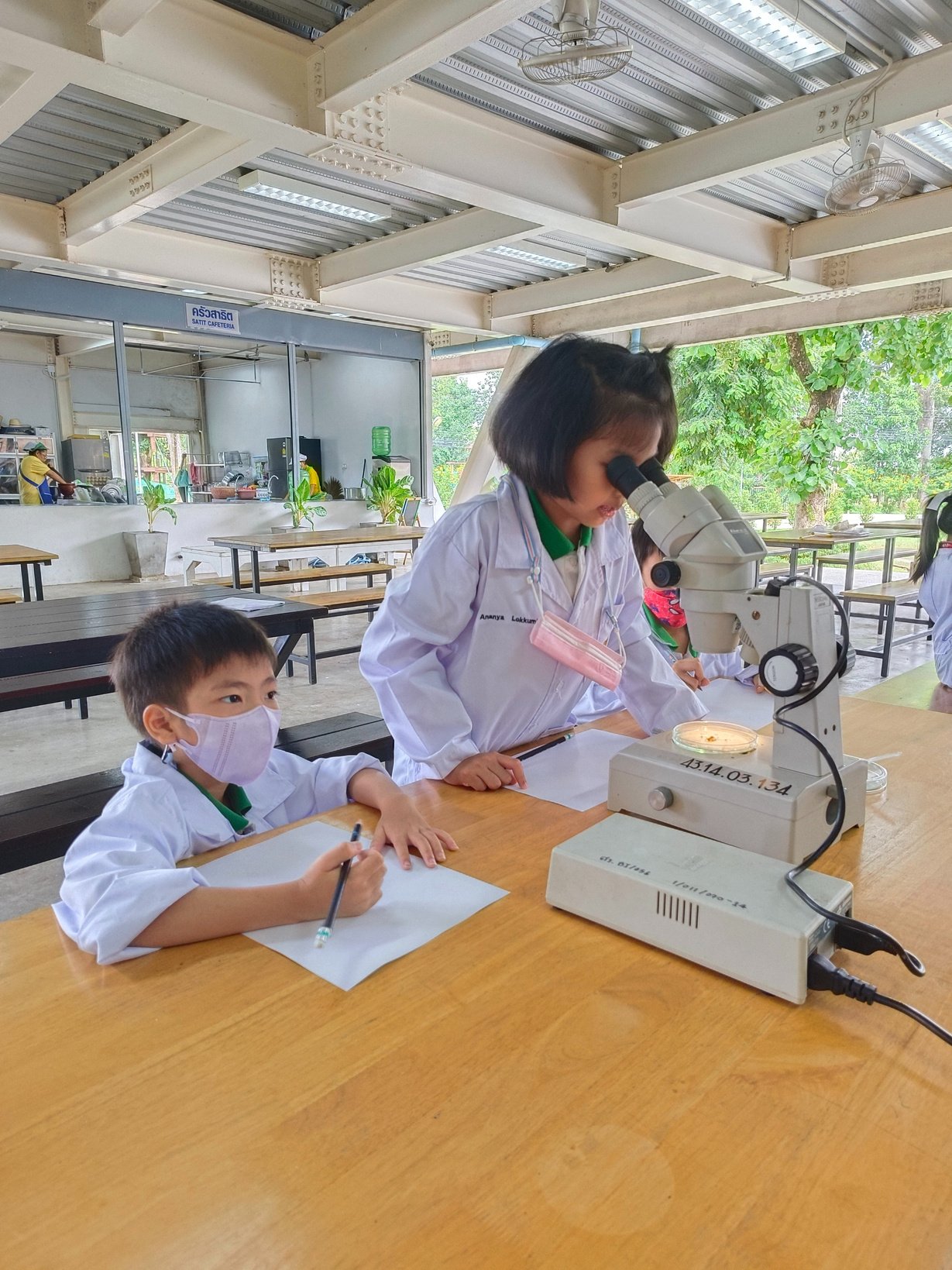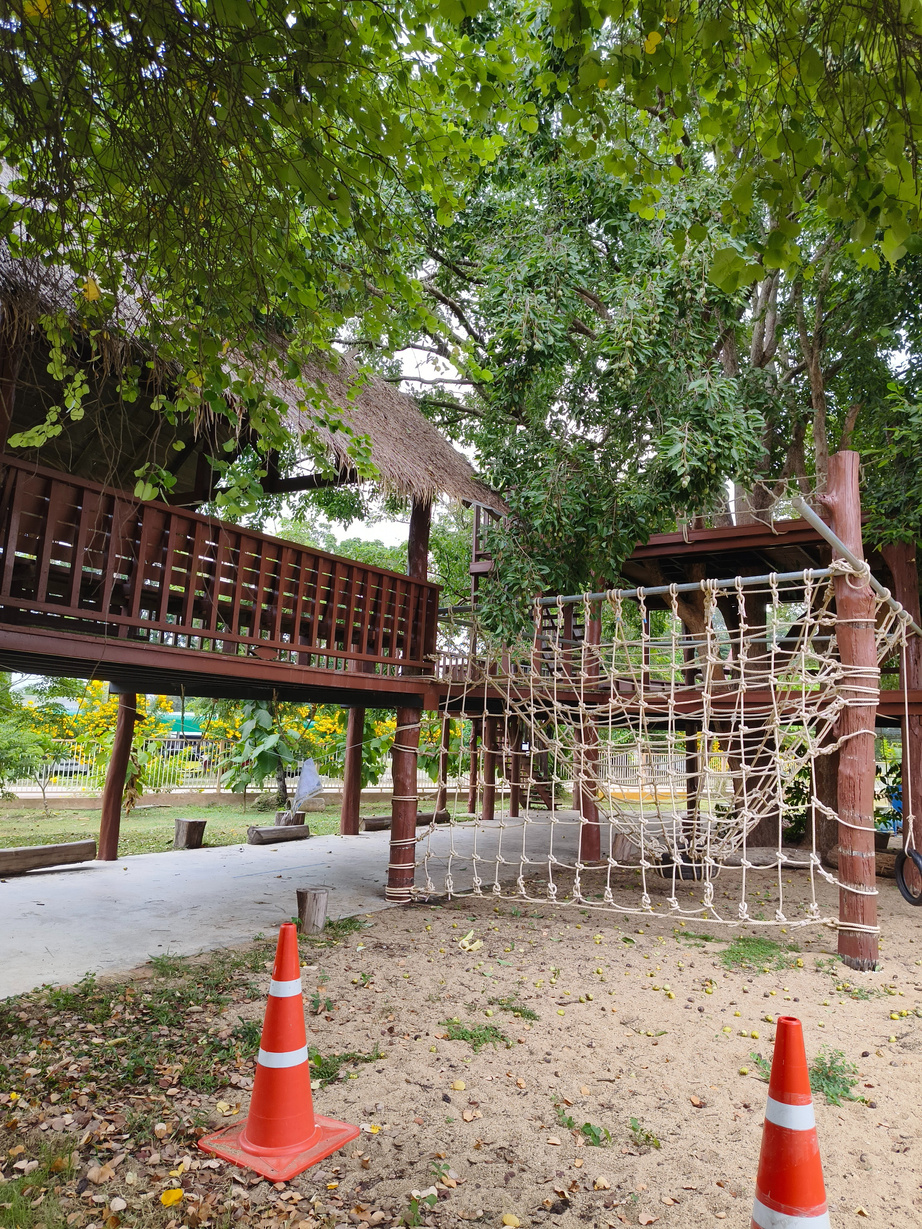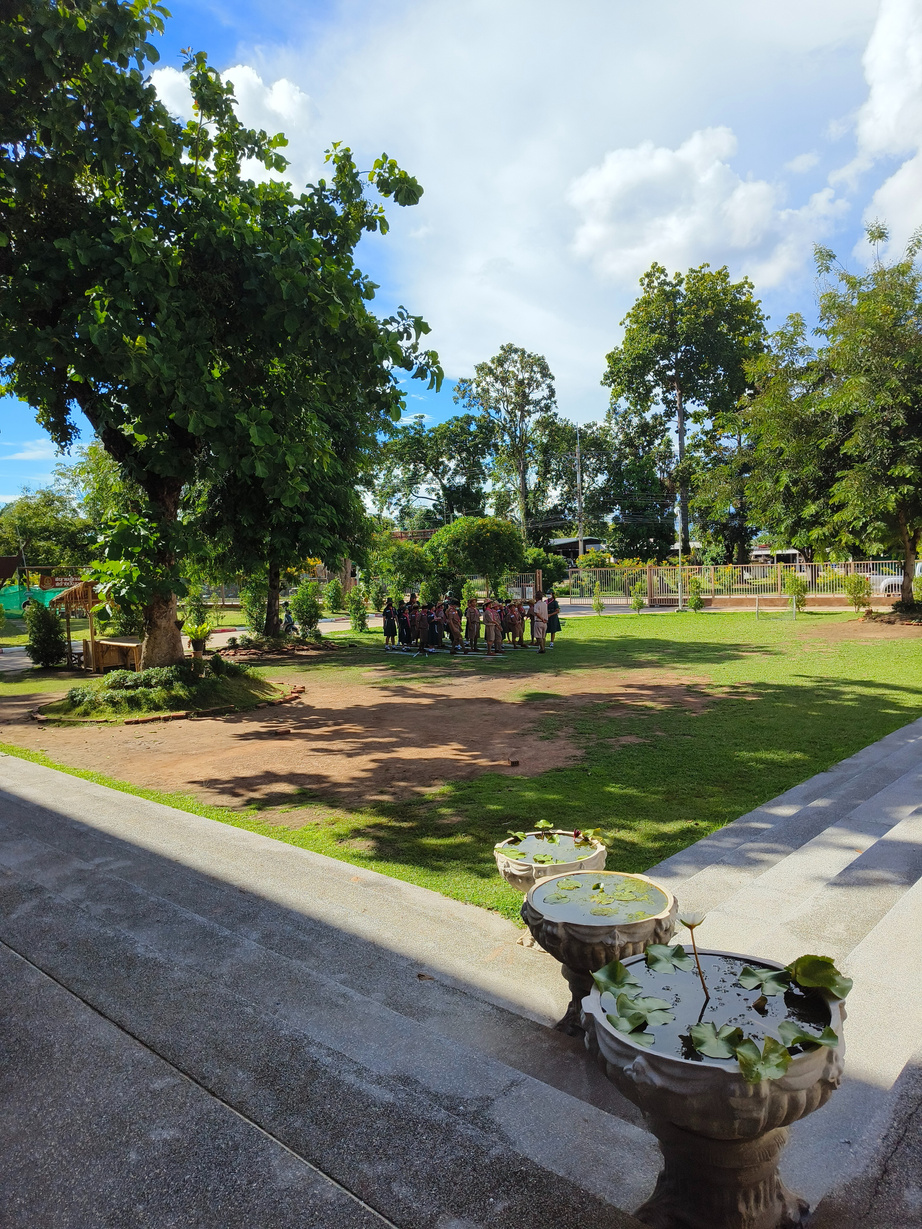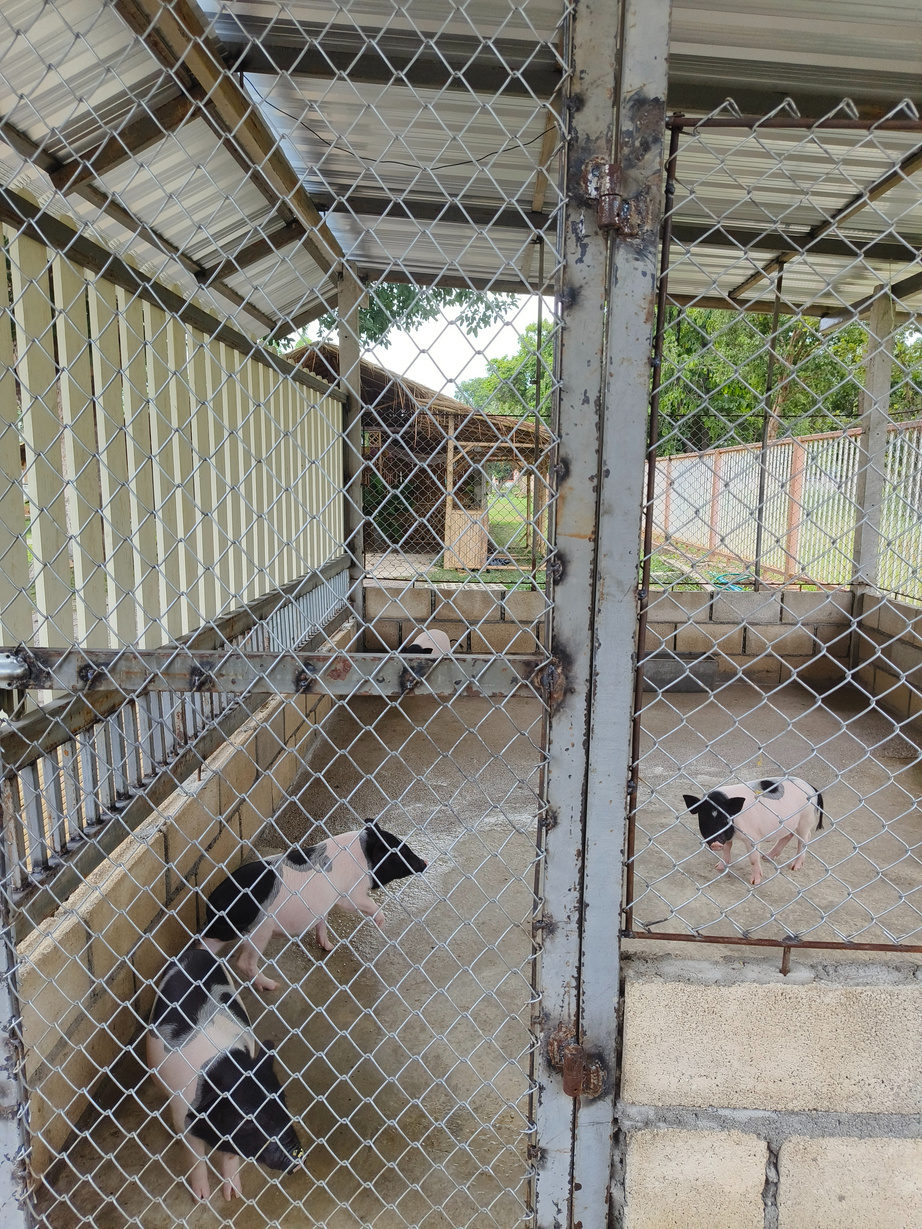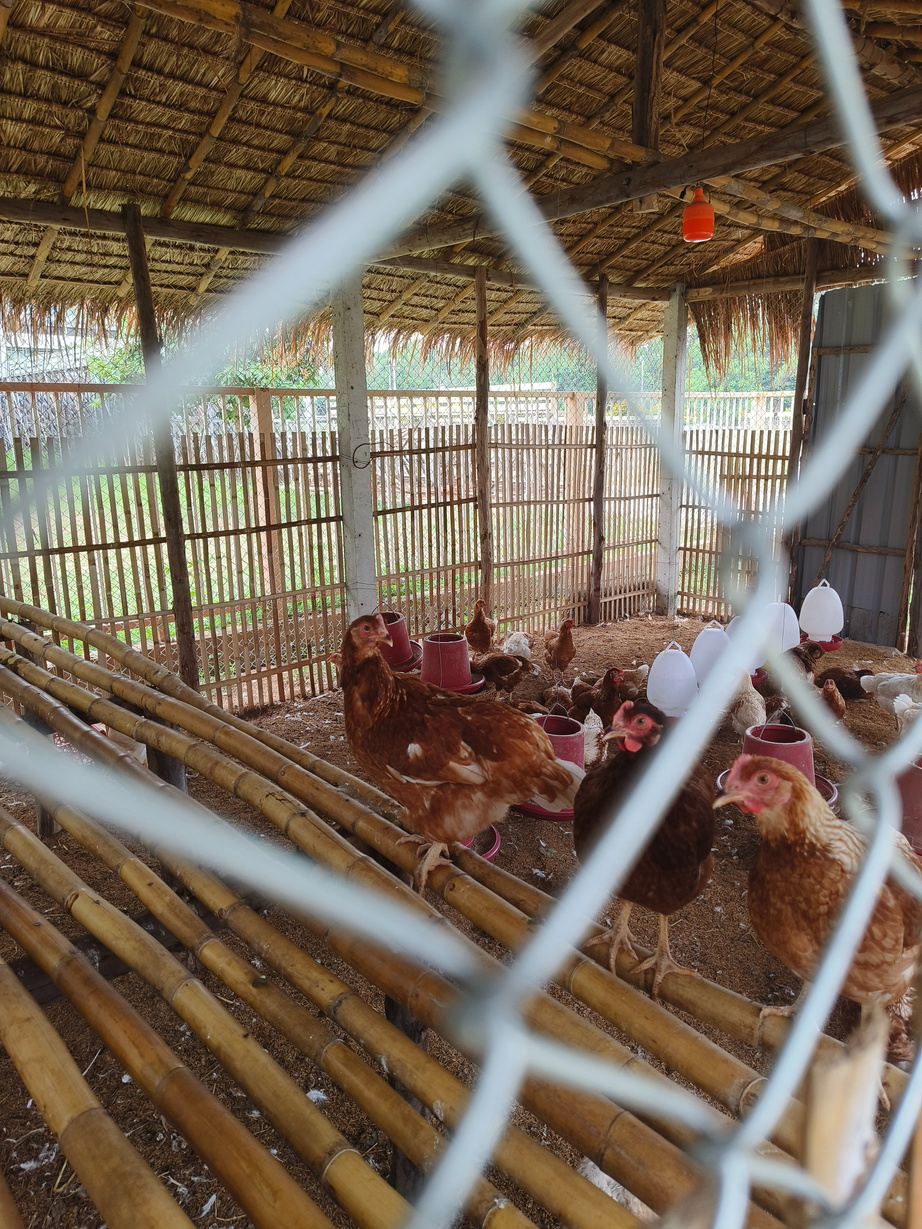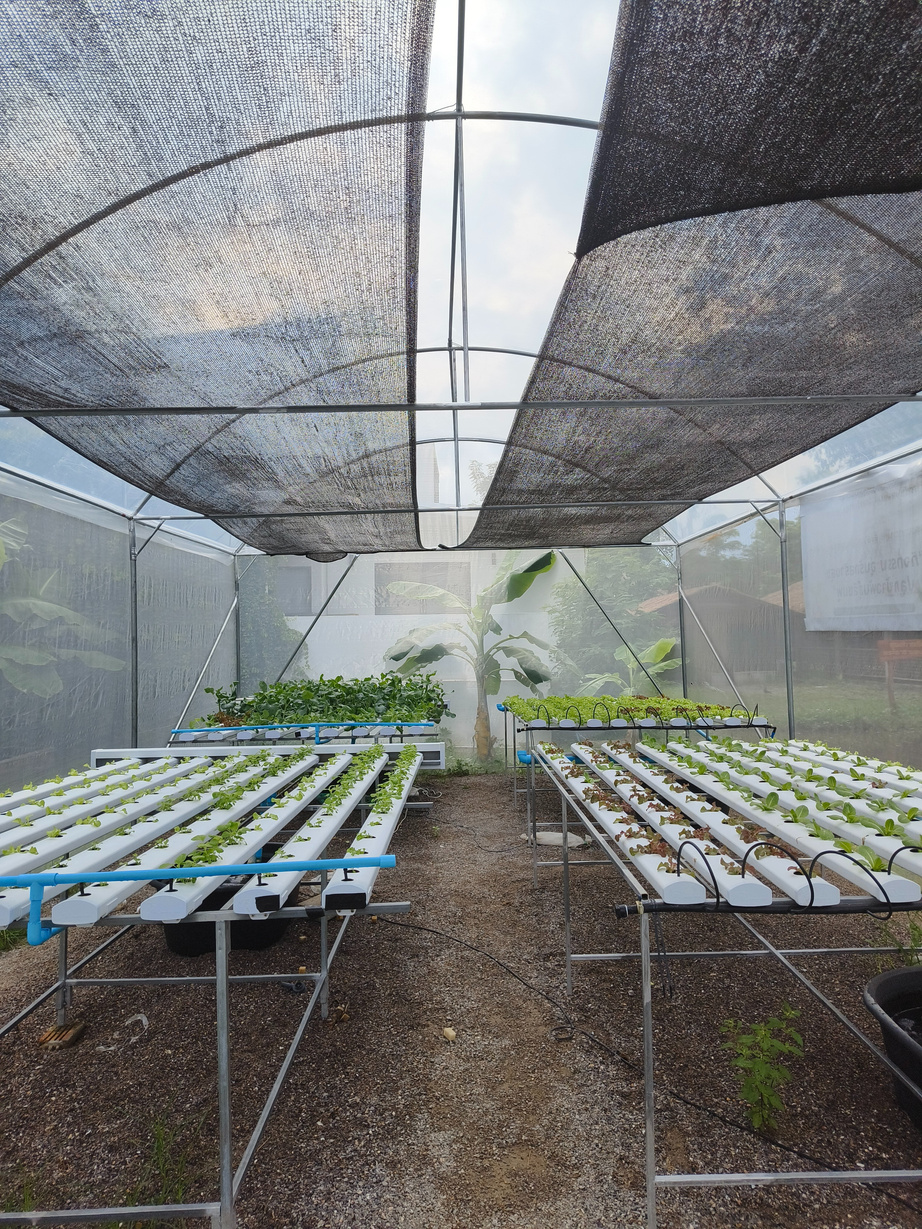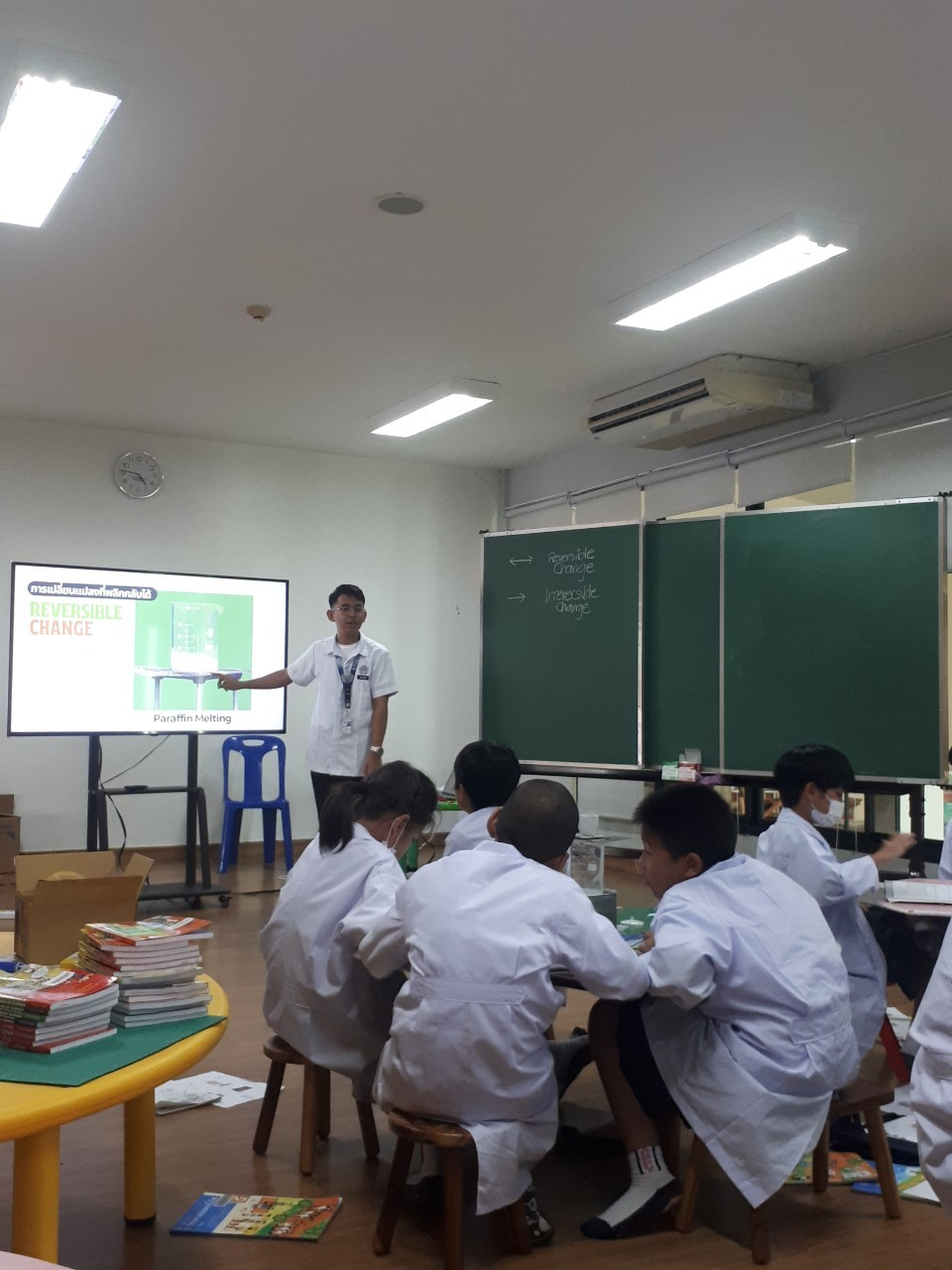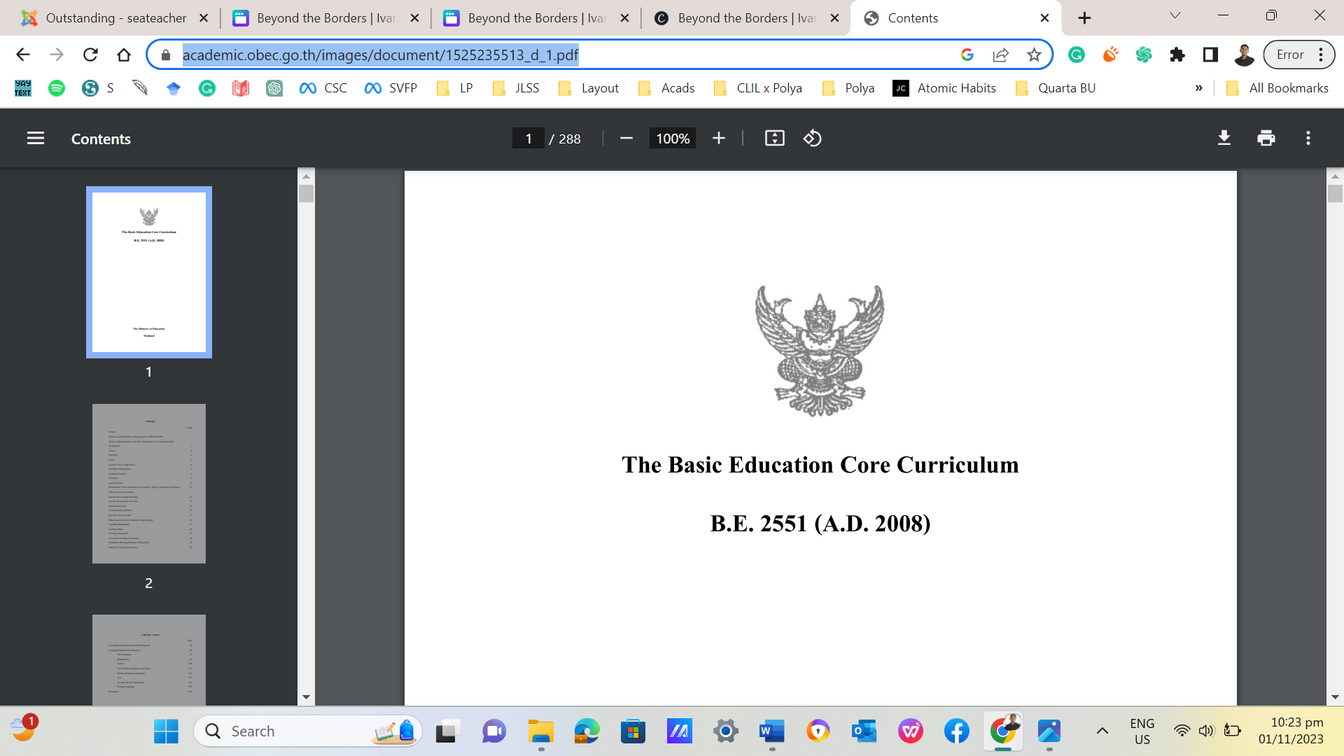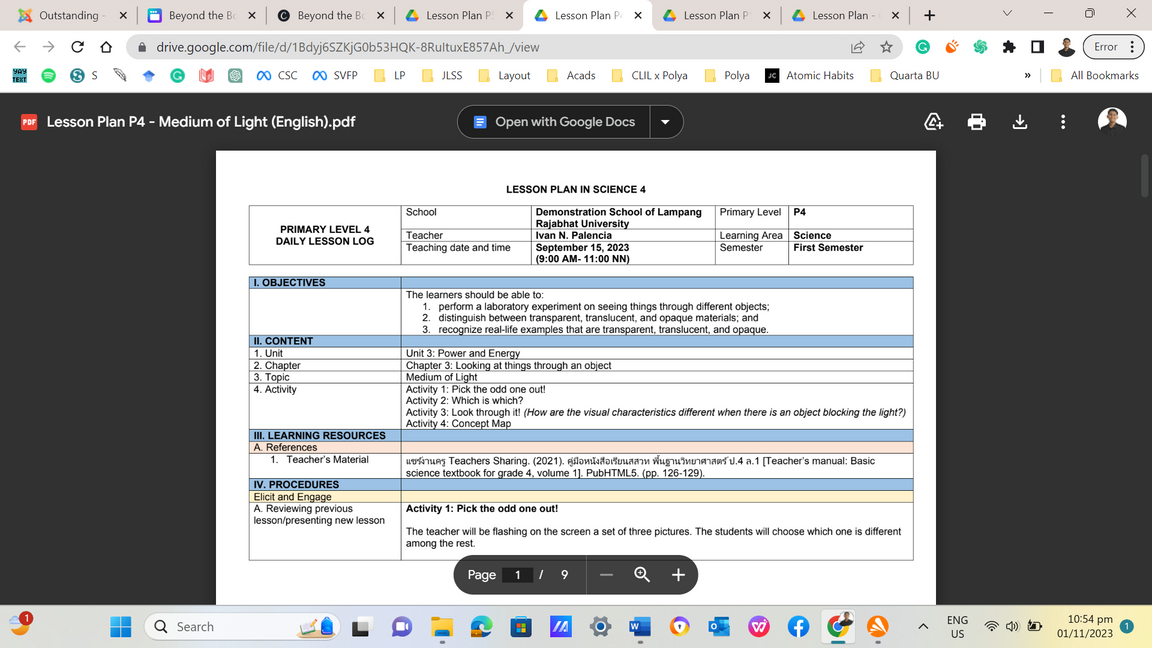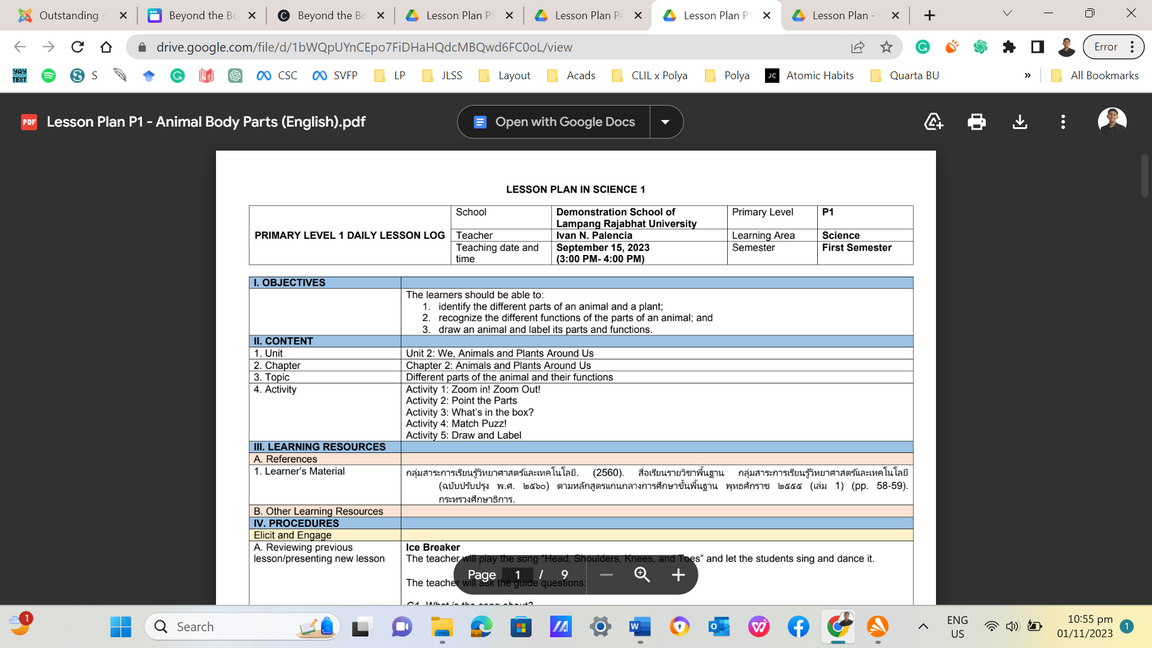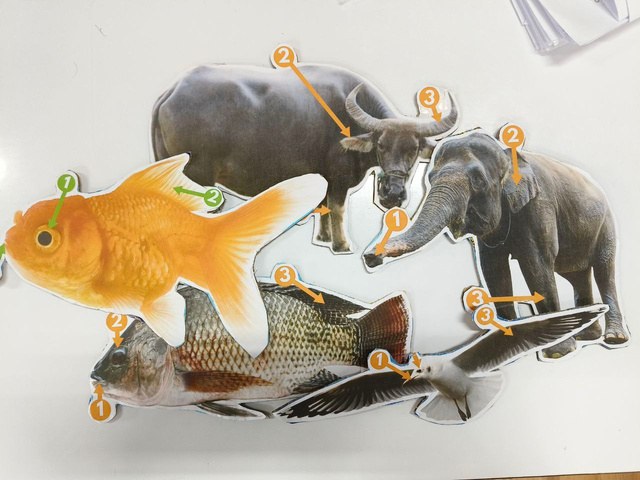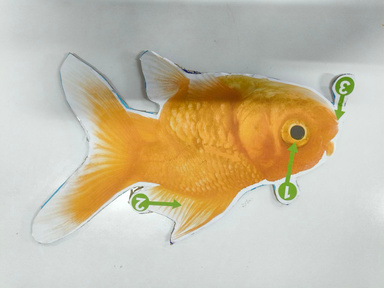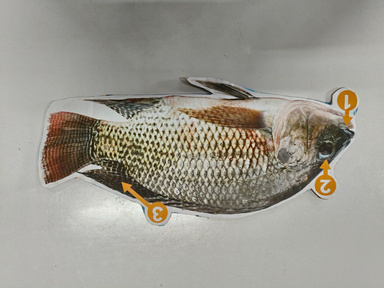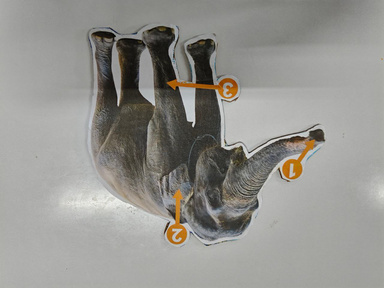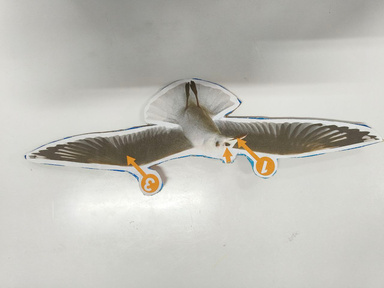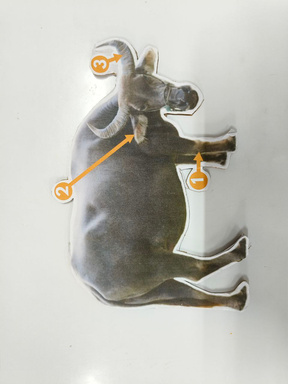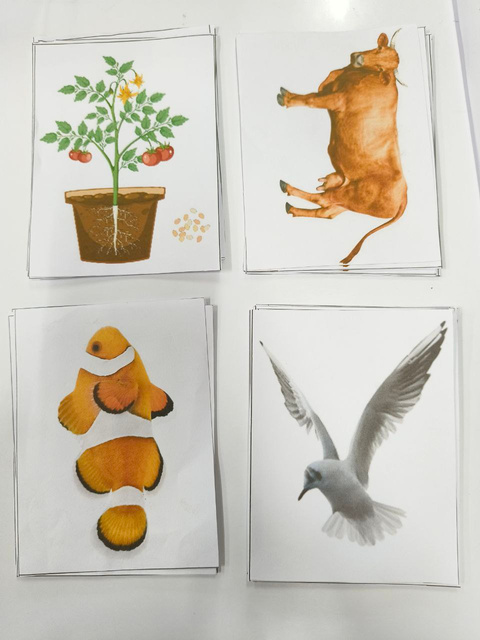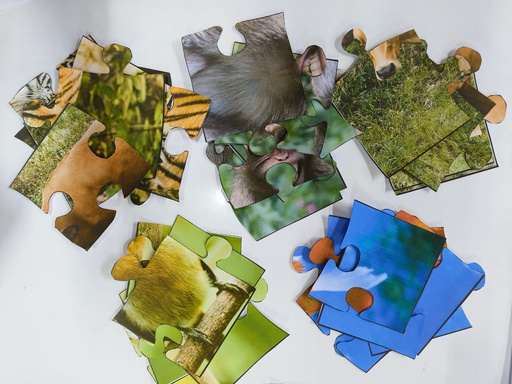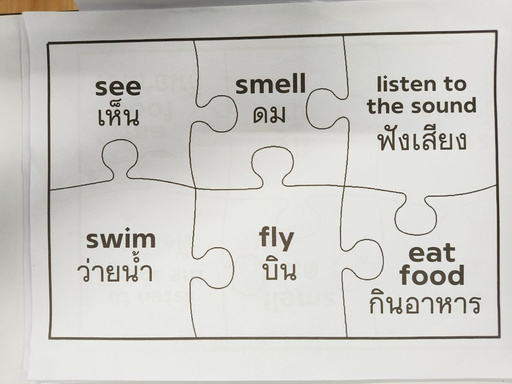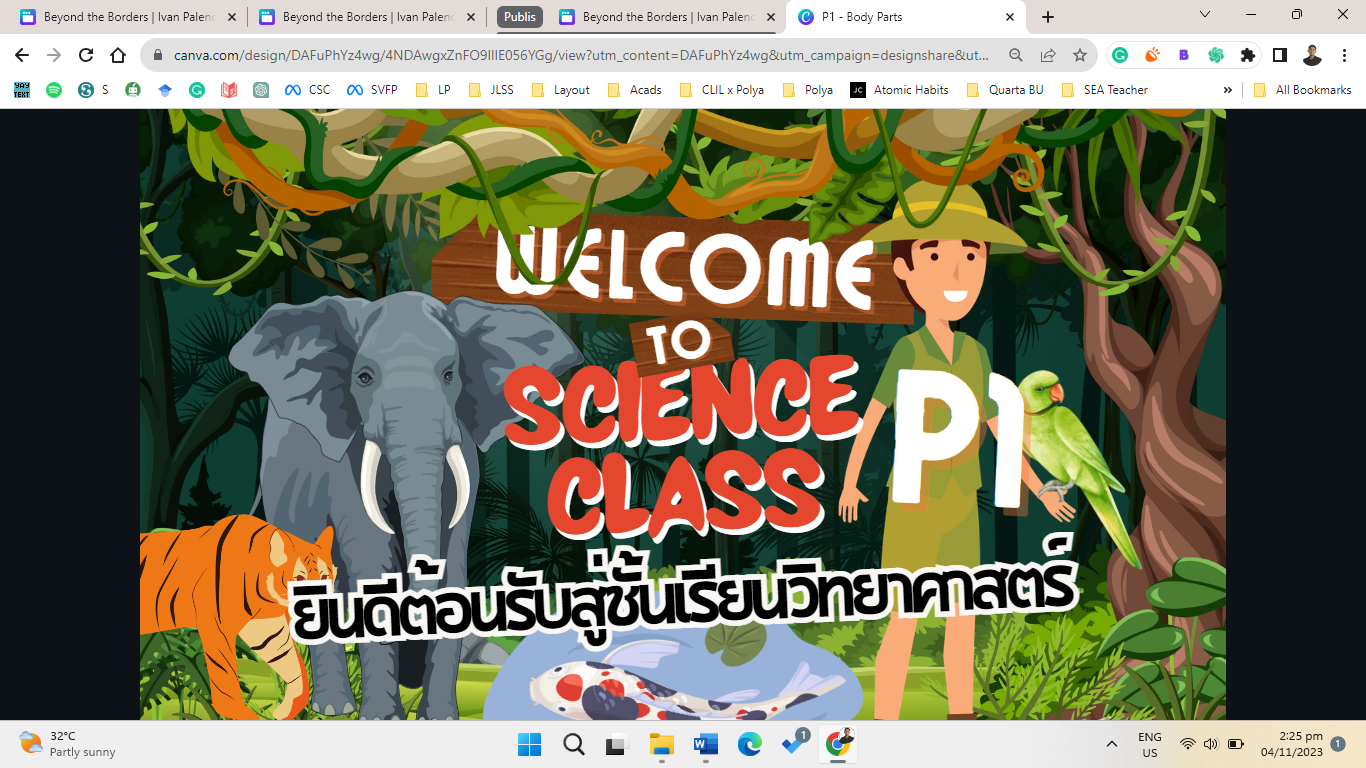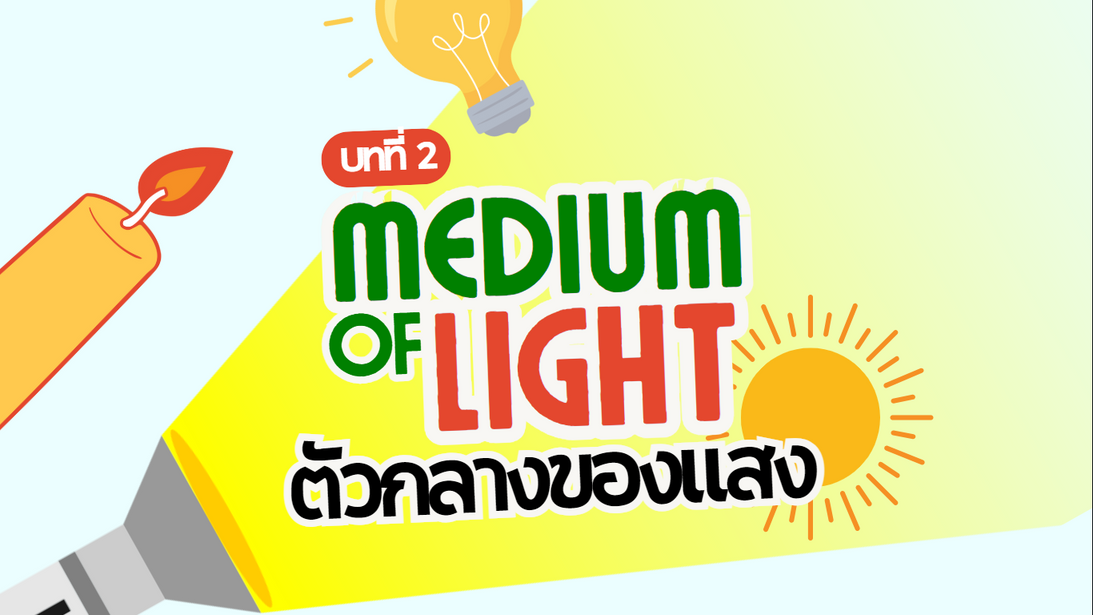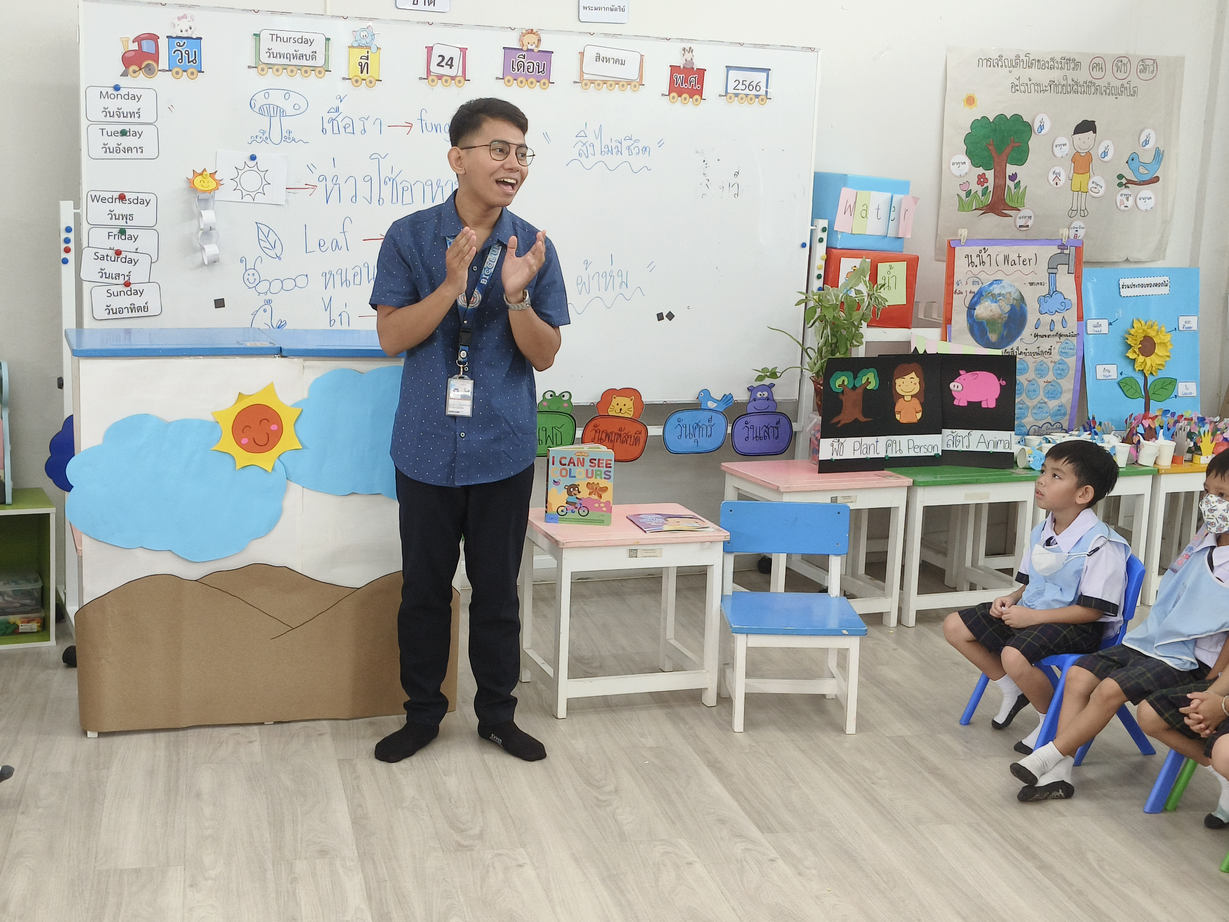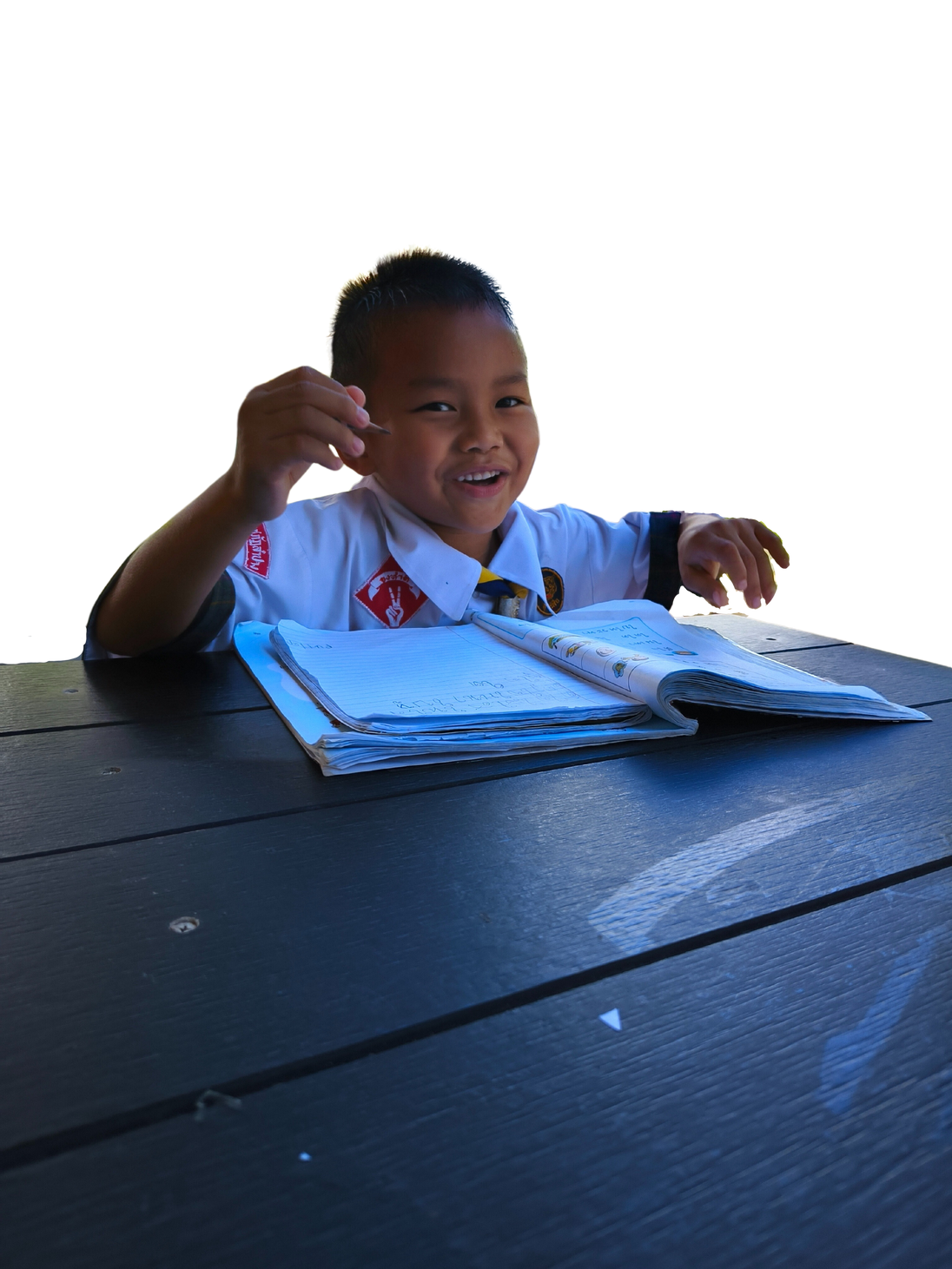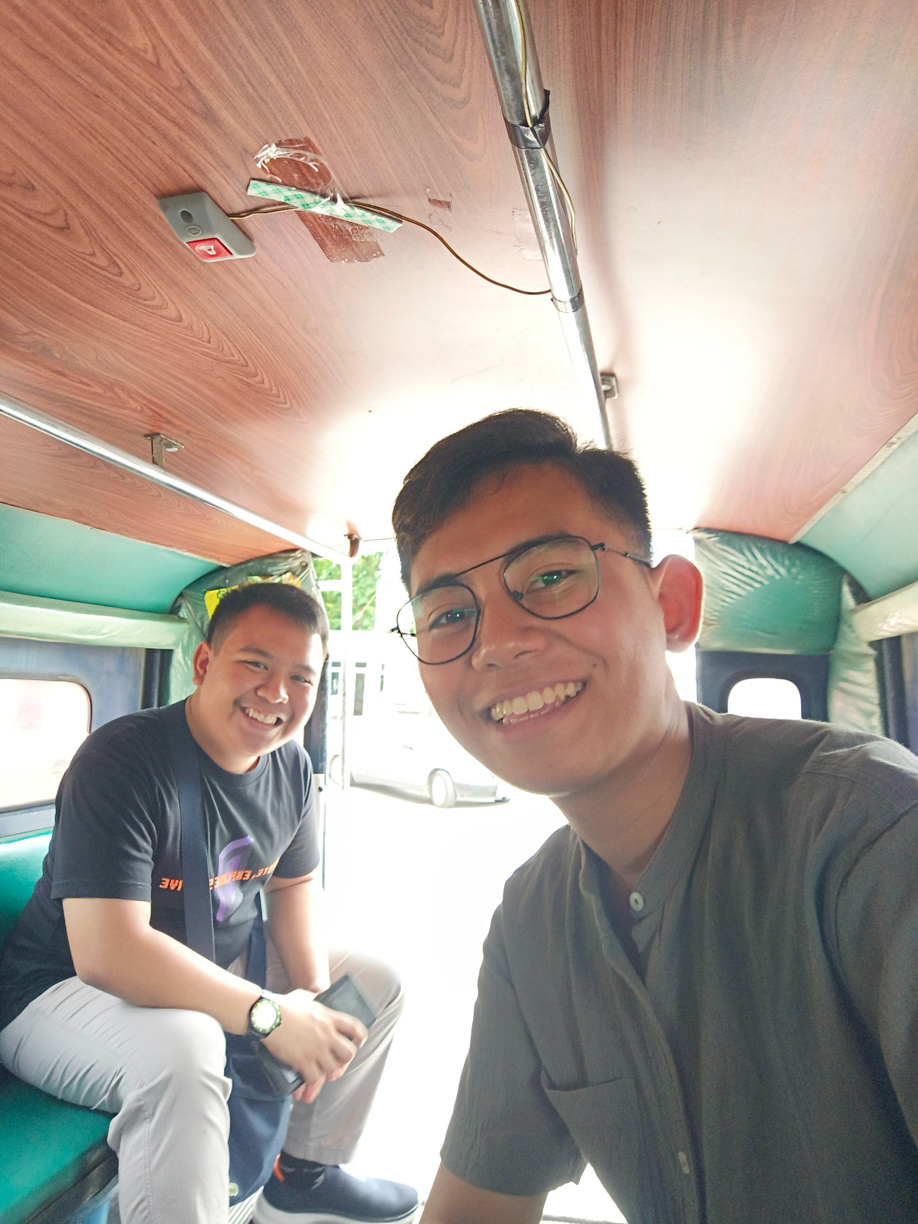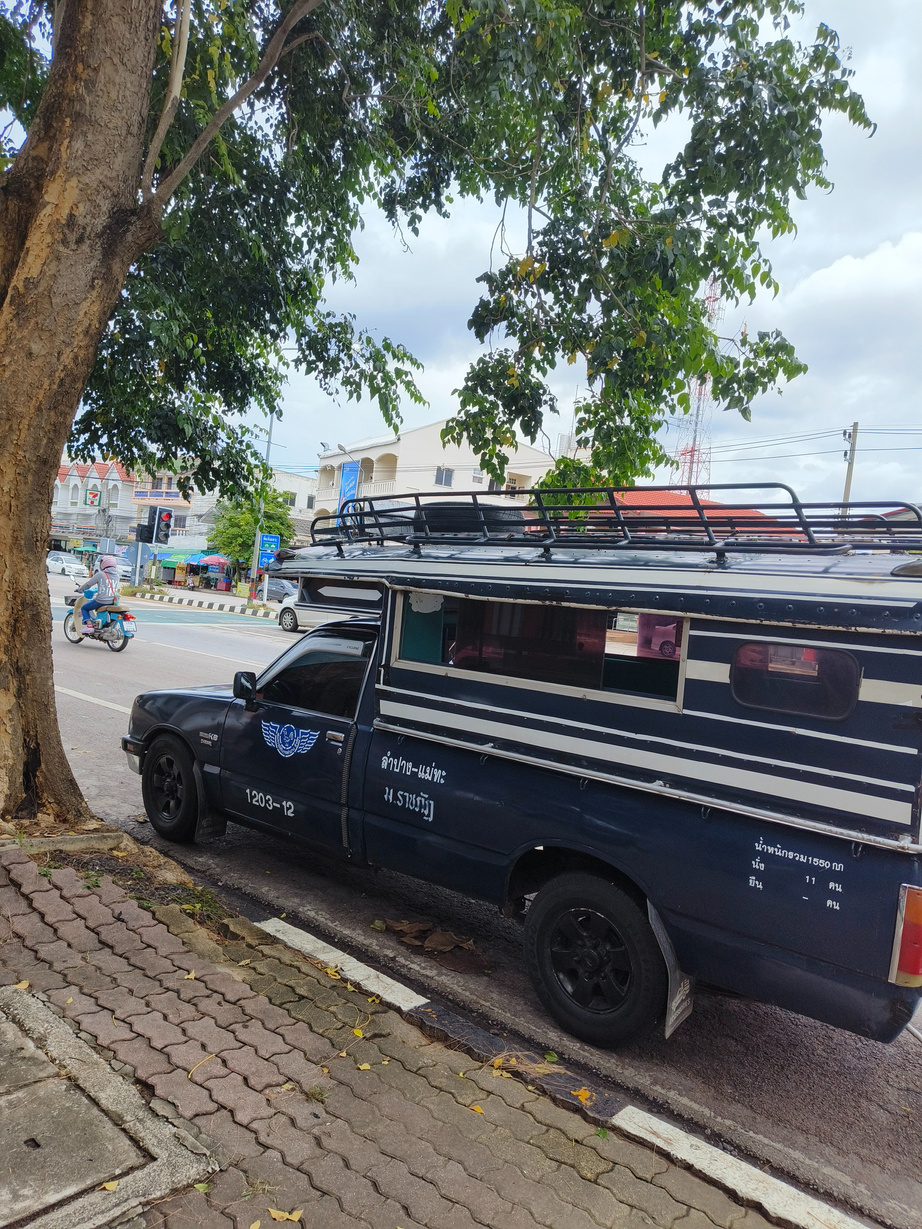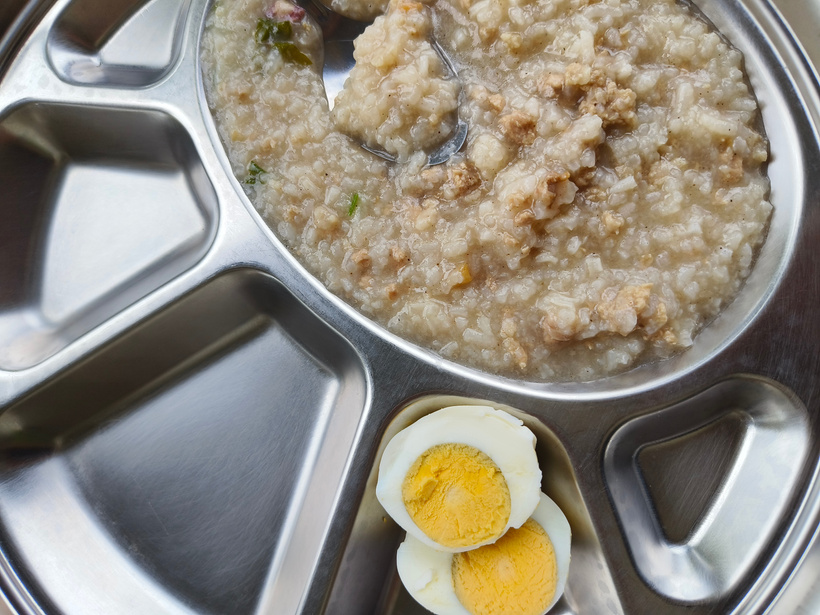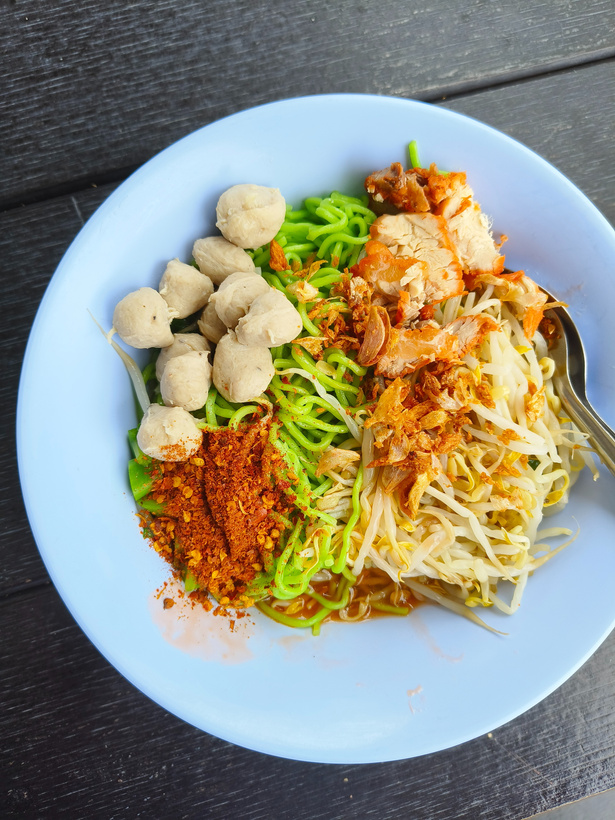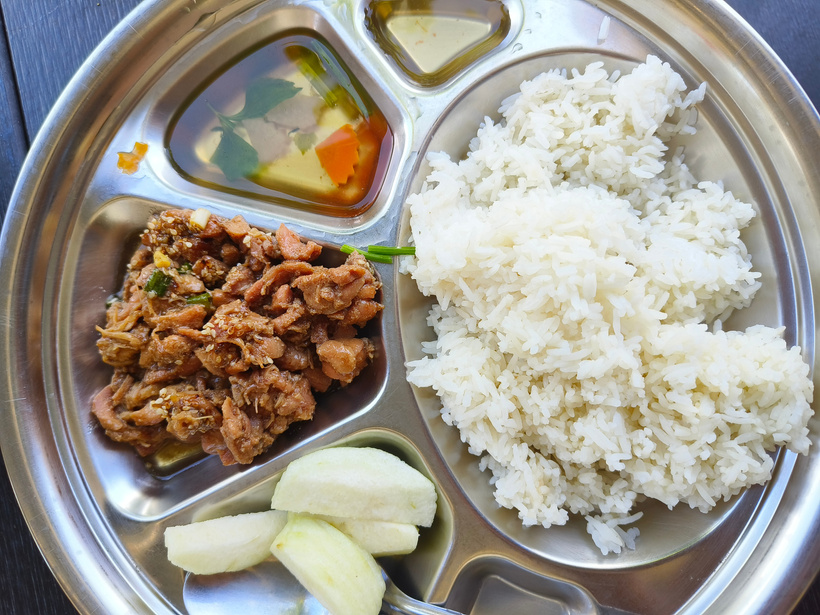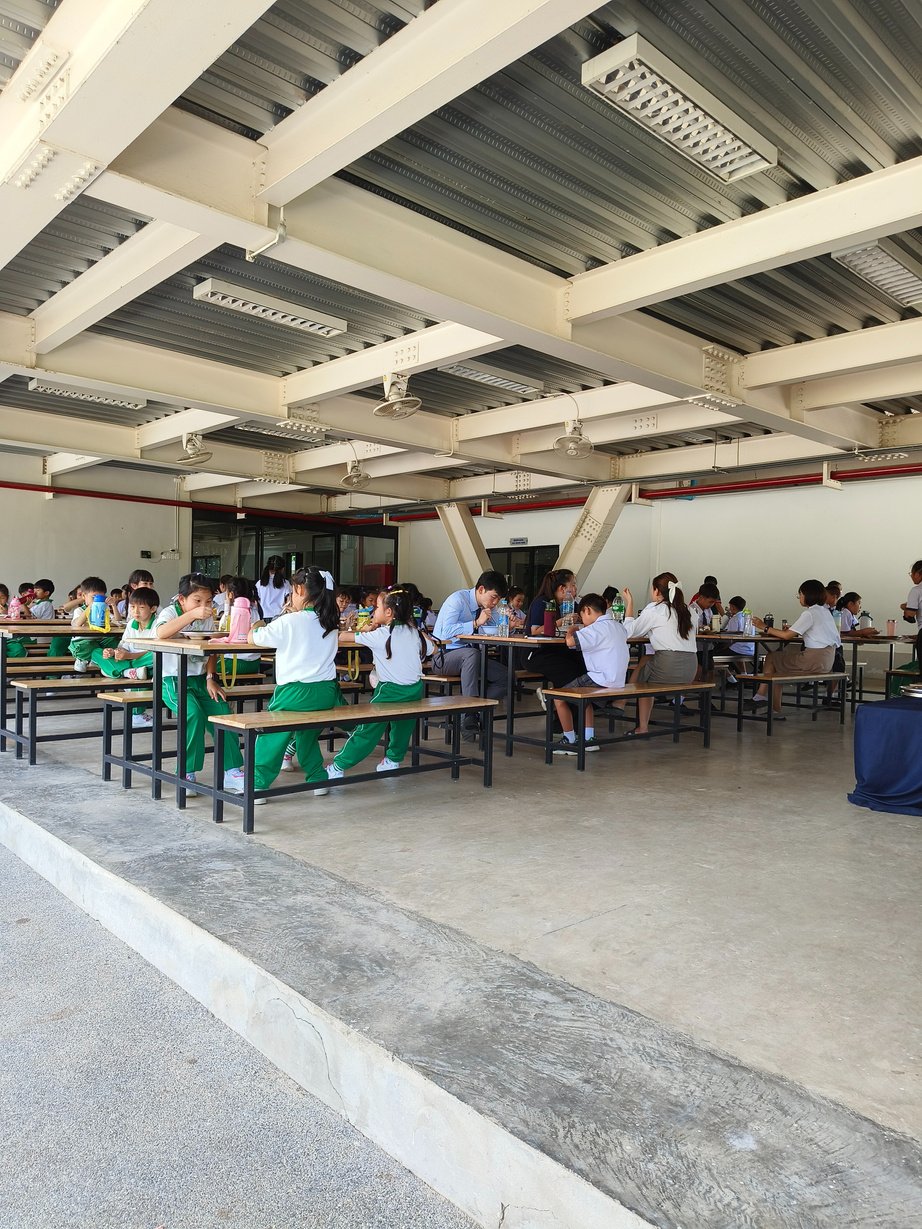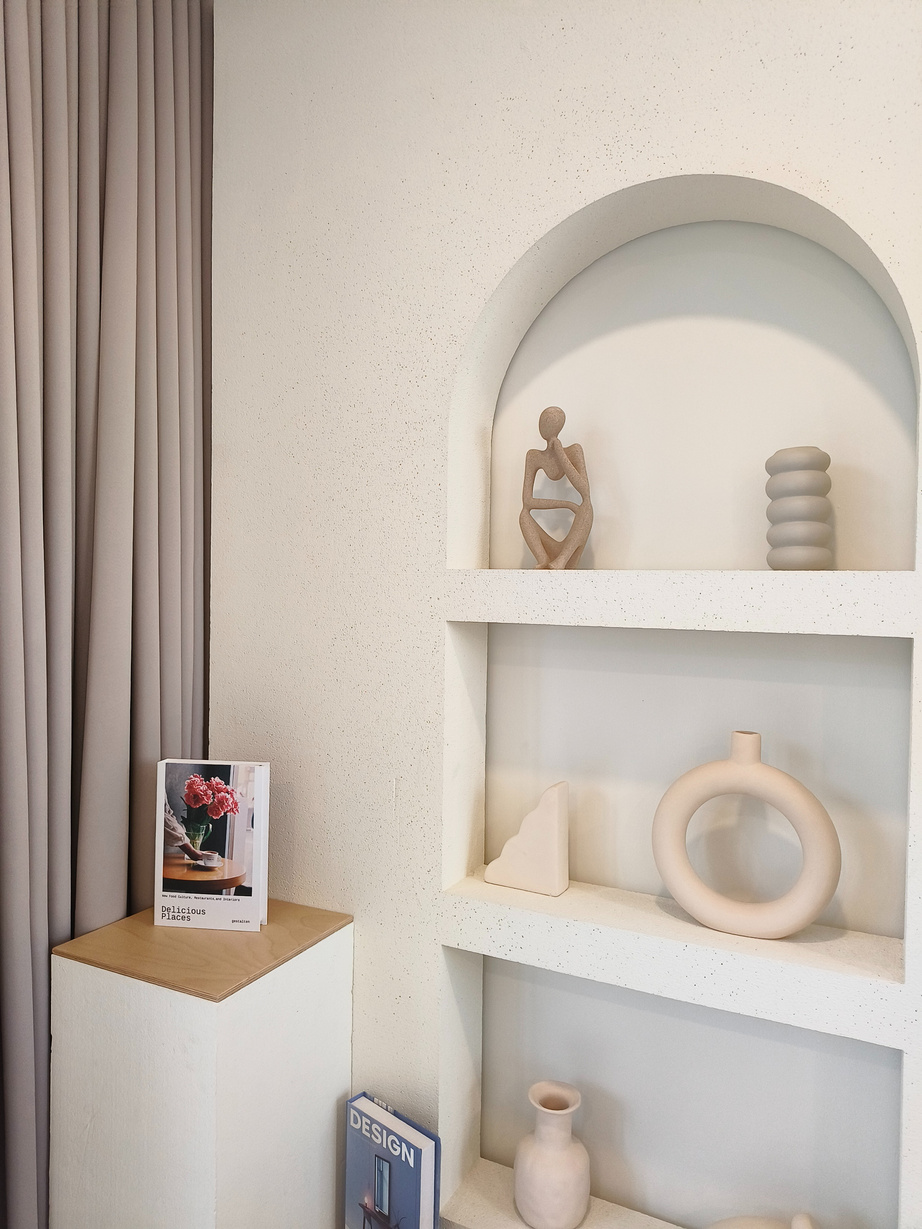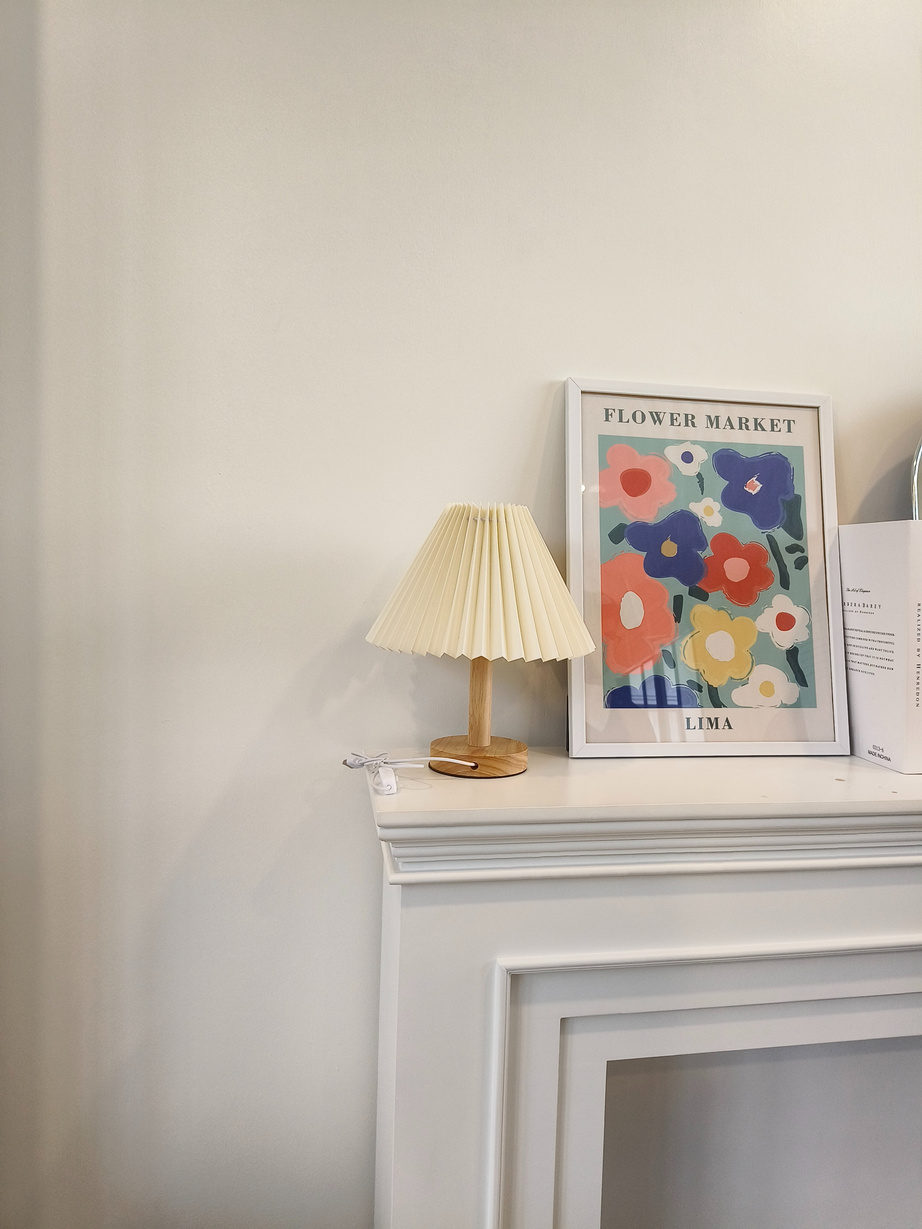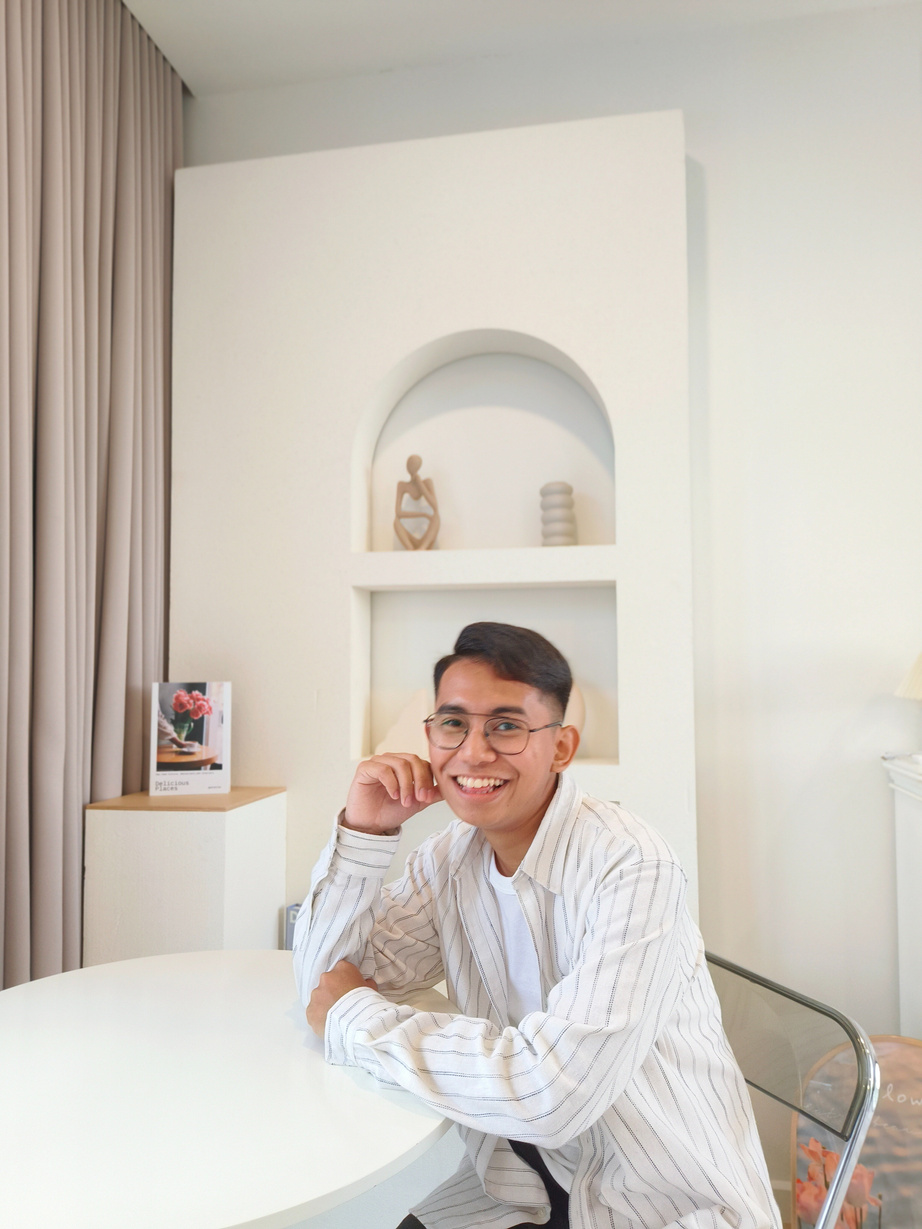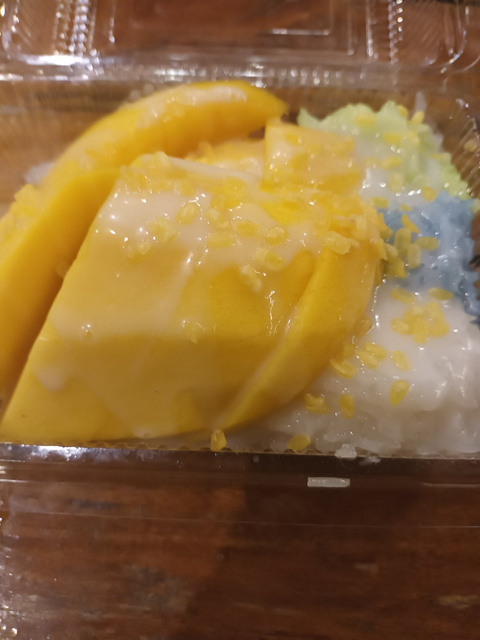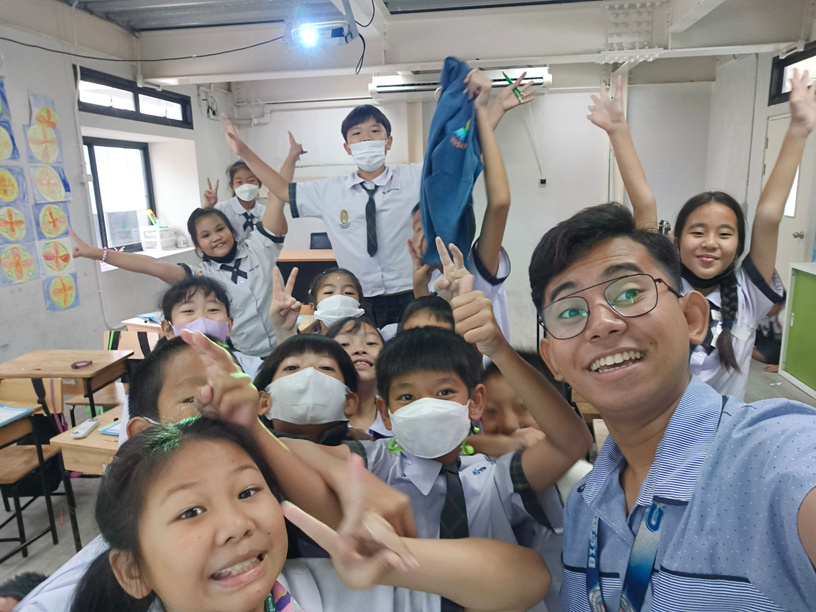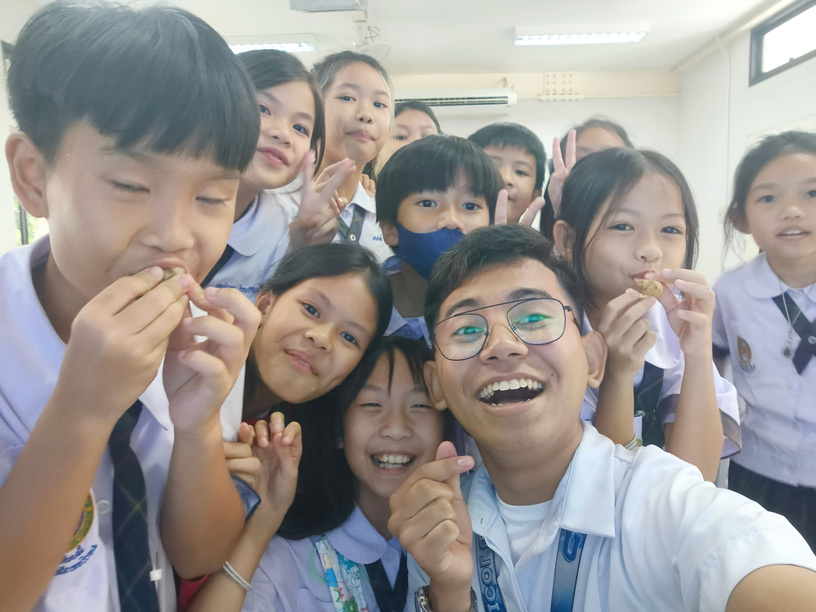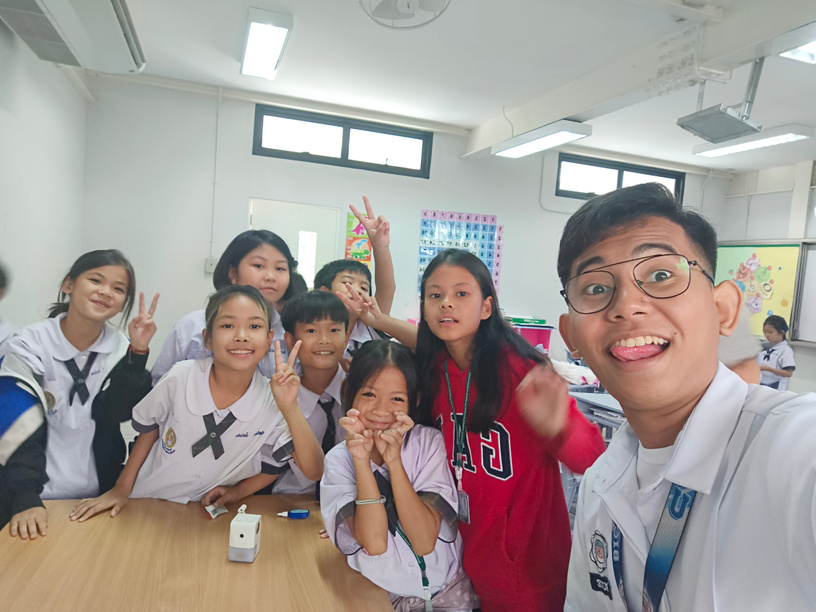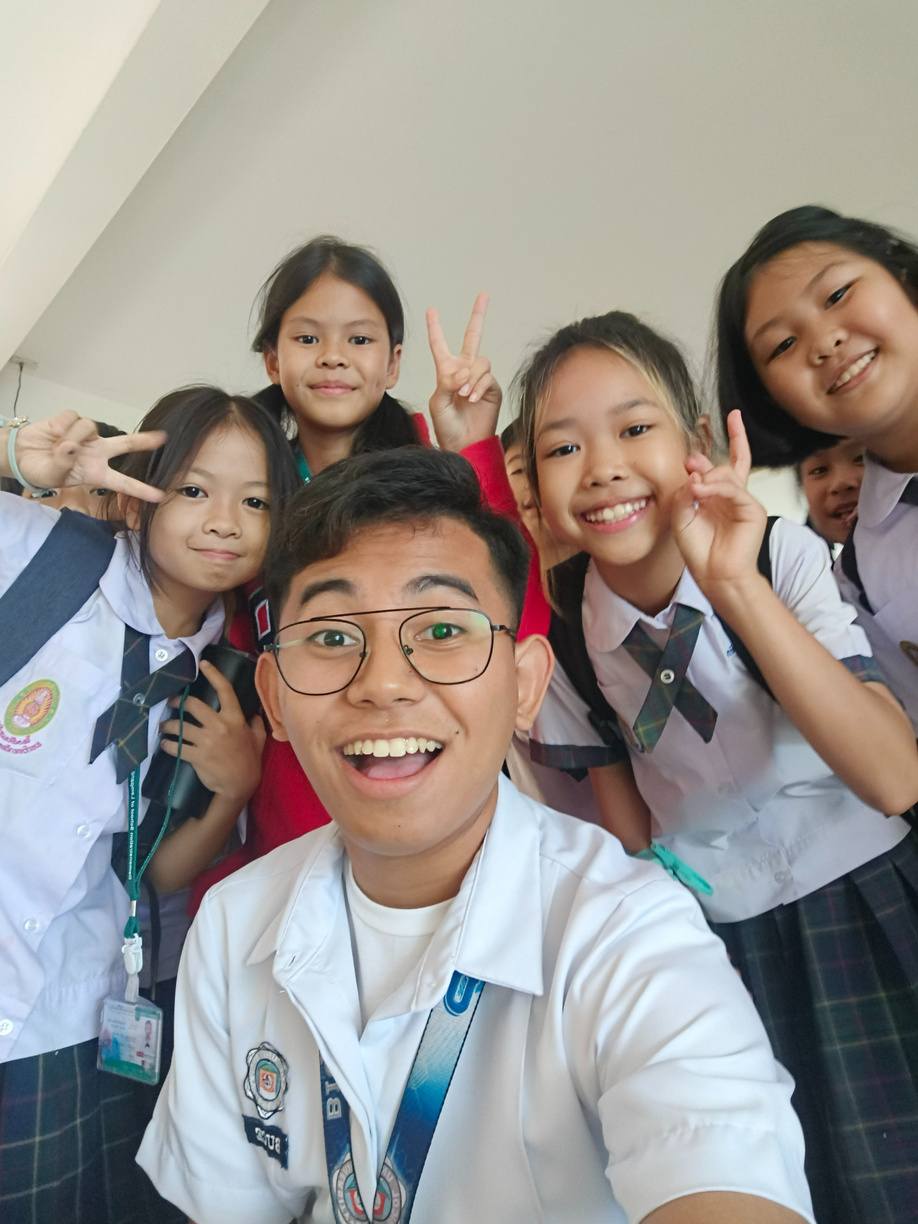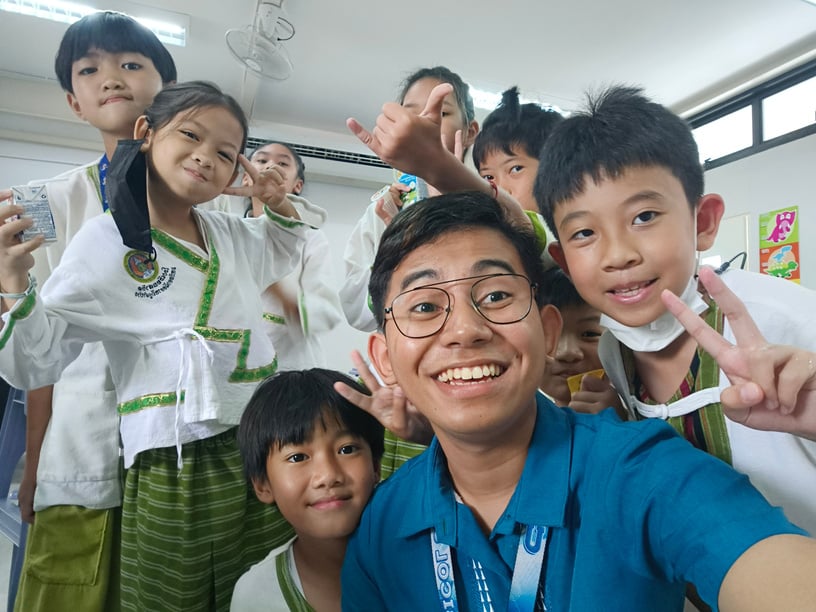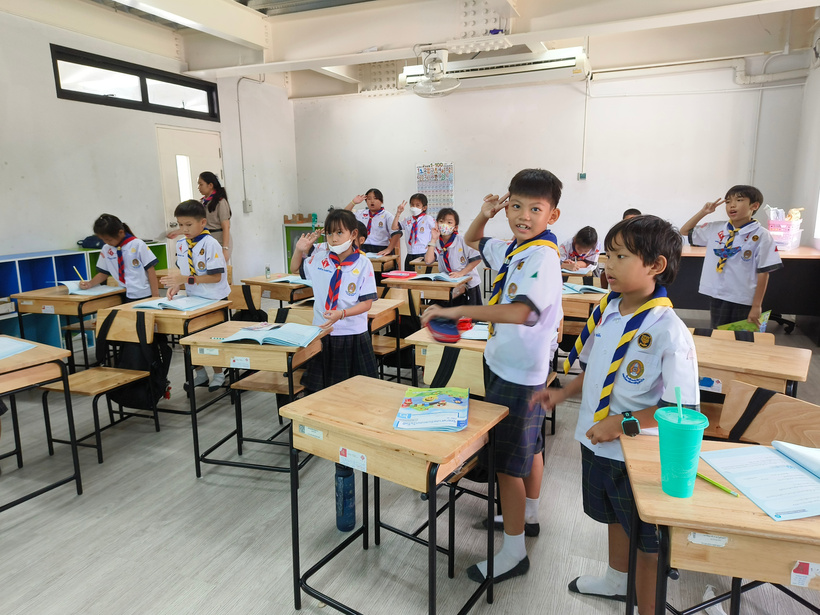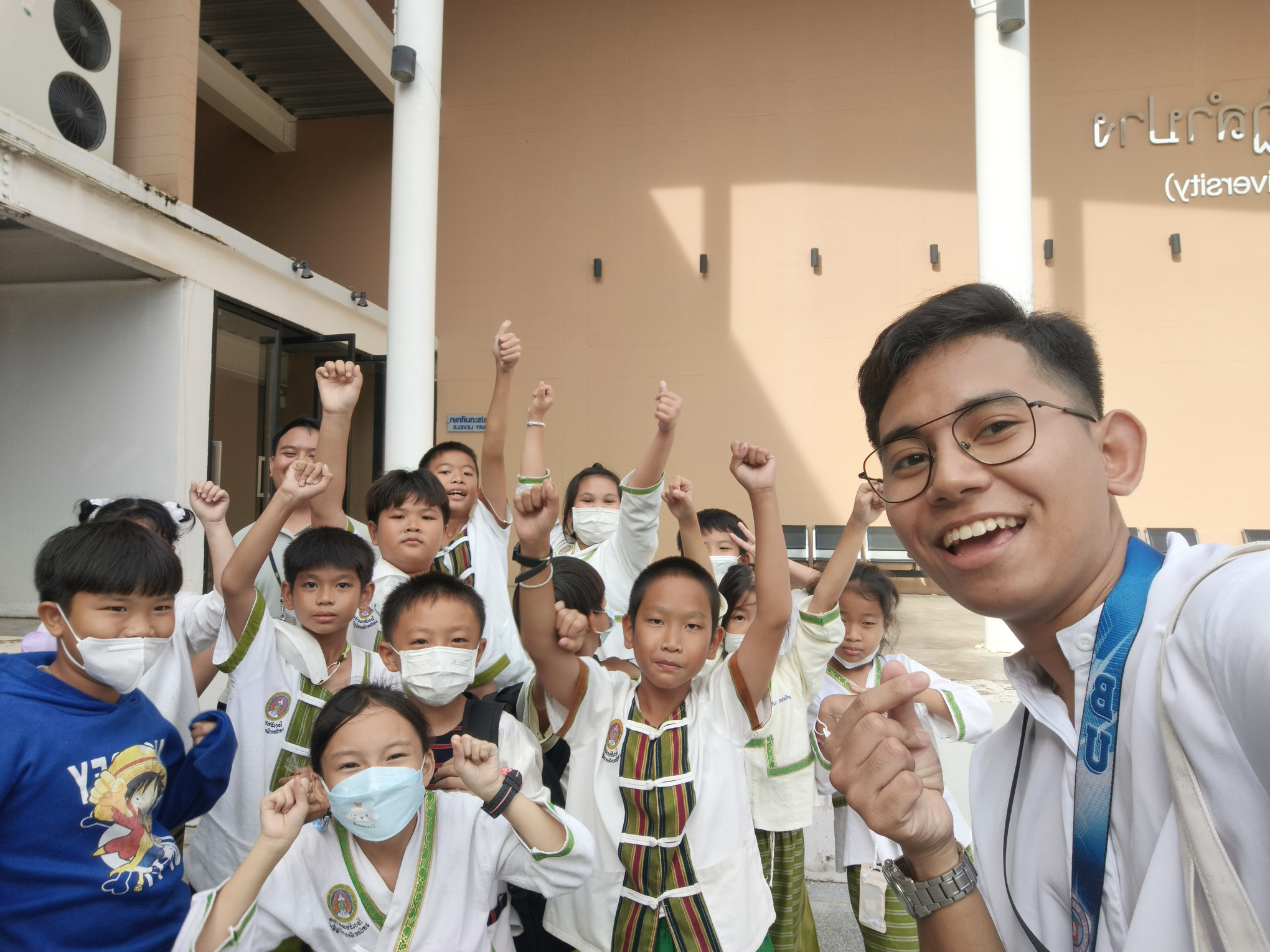
beyond
the borders
A Pinoy Pre-Service Teacher’s Adventure in the Land of Smiles
Sawasdee khrap!
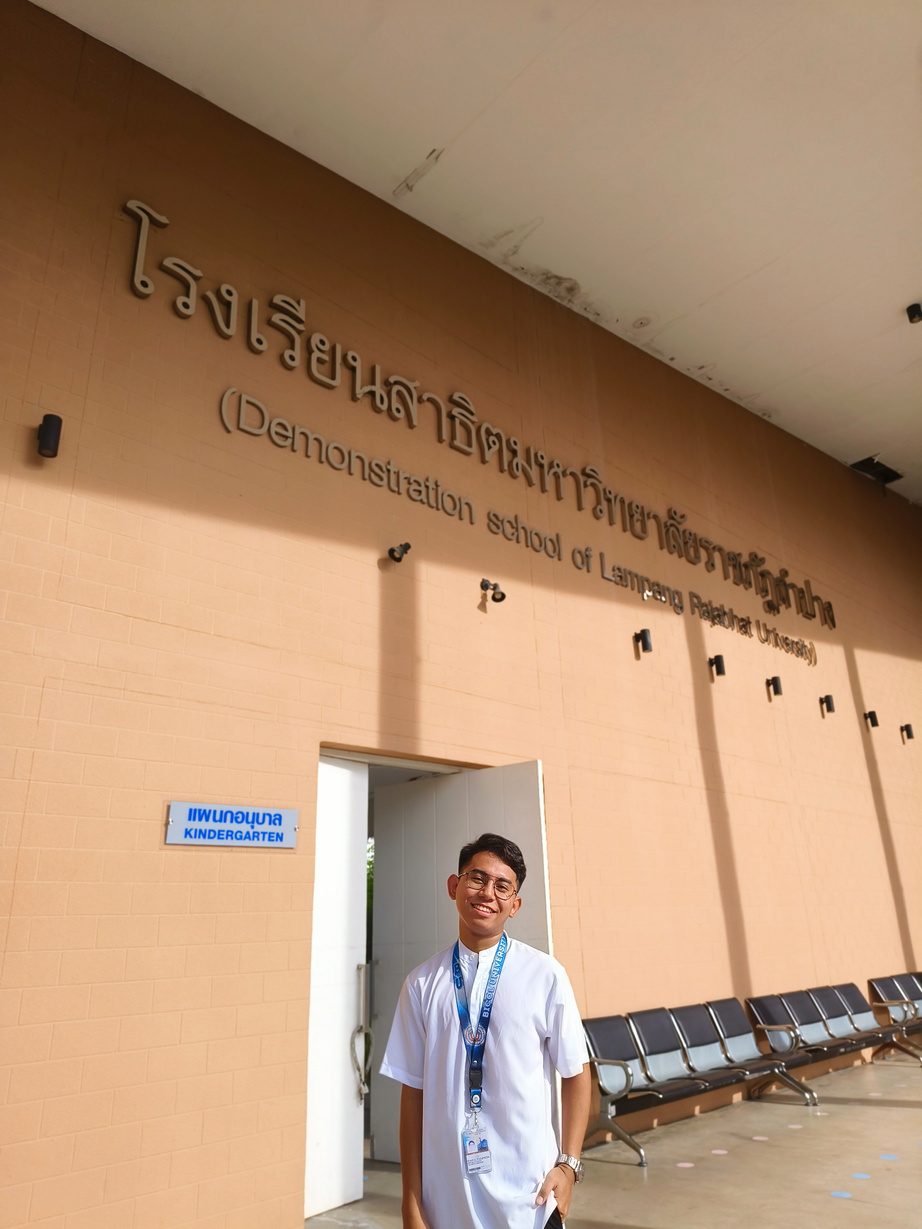
Greetings from Southeast Asia!
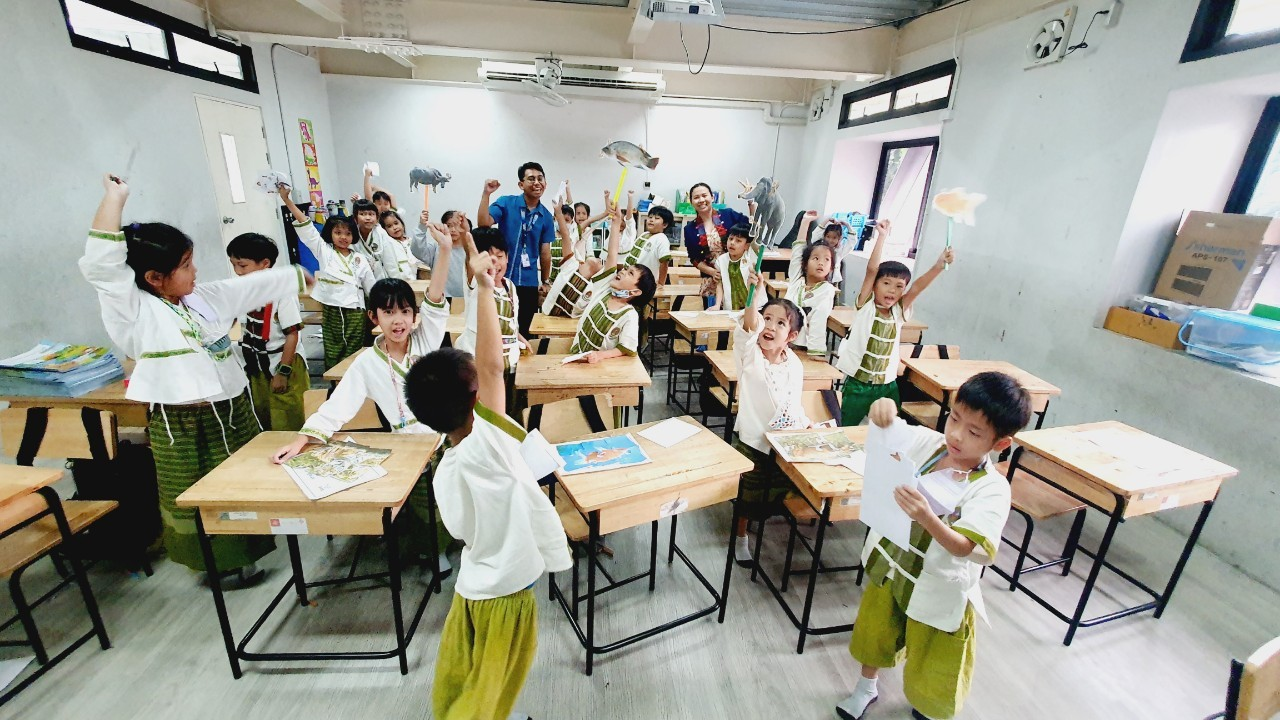
I am Ivan Nacional Palencia, a fourth-year student pursuing Bachelor of Secondary Education Major in Science at Bicol University in the Philippines. I had the incredible opportunity to be a part of the 9th Batch of the SEA Teacher Project, also known as the Pre-Service Student Teacher Exchange in Southeast Asia. During the exchange program, I was deployed at the beautiful Demonstration School of Lampang Rajabhat University in Thailand, where I had the privilege of teaching Science to primary-level students.
In this blog, I am excited to take you on a captivating expedition through my experiences and the invaluable lessons I acquired during the SEA Teacher Project. Together, we will explore a world of teaching, cultural exchange, and personal growth as I unveil the highlights of this truly life-changing adventure. Mabuhay!
about
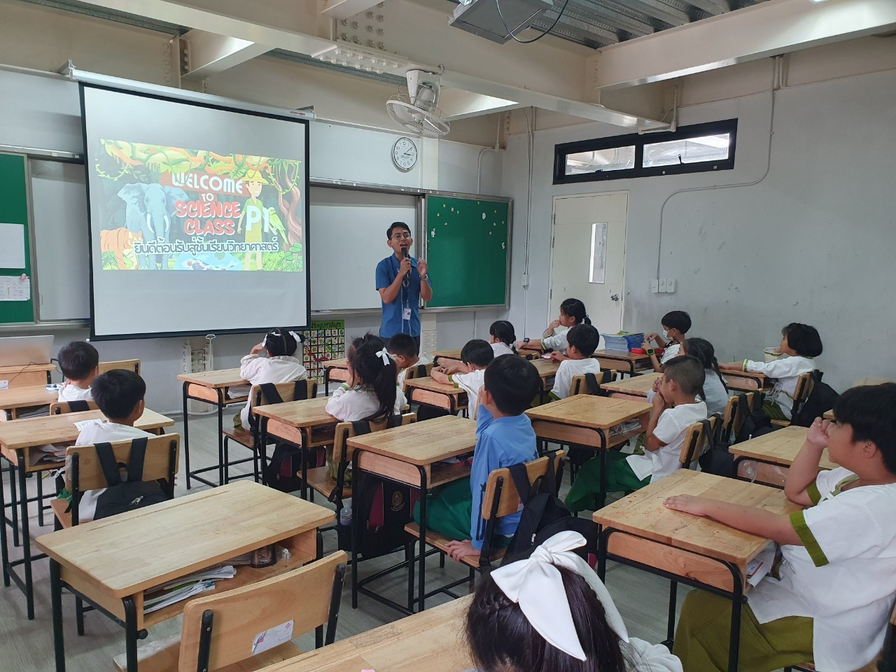
about
The SEA Teacher Project known as the "Pre-Service Student Teacher Exchange in Southeast Asia” aims to provide invaluable teaching experiences for the pre-service student teachers in Southeast Asia. This is in line with the Southeast Asian Ministers of Education Organization’s (SEAMEO) vision of enhancing education quality in Southeast Asia through seven priority areas, with special emphasis on "Revitalizing Teacher Education."
purpose
purpose
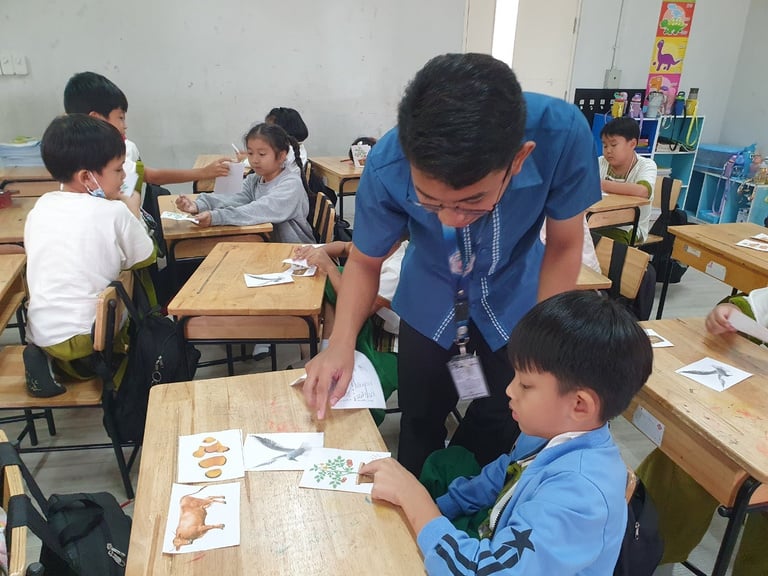
1. To enable pre-service student teachers to develop their teaching skills and pedagogy;
2. To encourage the pre-service student teachers to practice their English skills;
3. To allow the pre-service student teachers to gain a broader regional and world view; and
4. To expose future teachers to diverse teaching and learning situations and opportunities, and the value of flexibility.

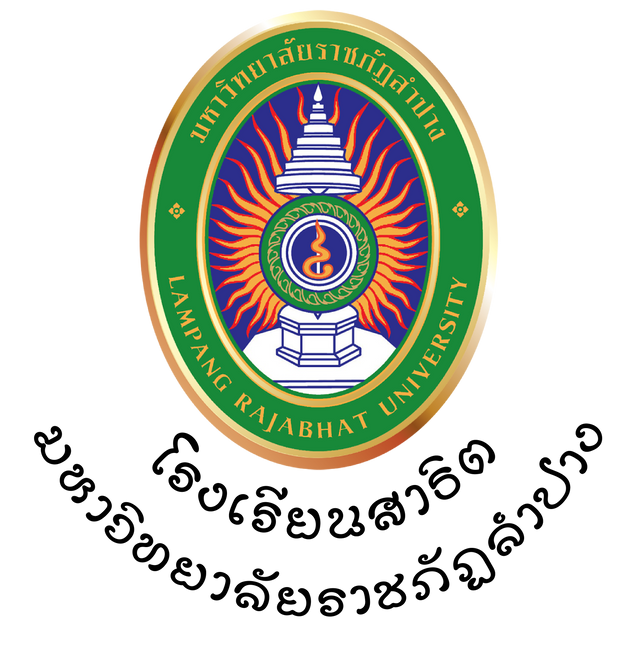
a. Organizational Structure
CHANCELLOR
DEAN OF THE FACULTY OF EDUCATION
STEERING COMMITTEE
According to university regulations
MANAGEMENT READER
PARENT AND TEACHER CLUB
DEPUTY DIRECTOR
- Correspondence work
- Personnel work
- Finance, accounting and parcel
- Quality assurance work study
- Public relations work
- Information work
- Building work
- Environment and develop learning resources
- Community relations work
- Traffic work
WORK GROUP
- Course development work
- Teaching and learning, evaluation
- Registration work
- Library work
- Special children's work
- Experience training work profession
- Special project work
- Research
- Supervision work
WORK GROUP
- Student discipline work
- Advisory teacher work
- Student welfare work
- Student council work
- Student Affairs
- Special events
- Community relations work
- Guidance and development work student
- Nutrition work
- Health and nursing work
WORK GROUP
1.3 TEACHING SYSTEM
The Lampang Rajabhat University Demonstration School follows a weekly schedule, operating from Monday to Friday. The school day commences at 8:10 a.m. with a flag-raising ceremony and a moment of prayer, setting a solemn tone for the day's activities. Following this, students engage in a variety of activities until 9:00 a.m. The various activities include games, trivia, Chinese and Thai vocabulary, and culture. After these activities, both students and teachers proceed to their classrooms for their respective homeroom orientations. When the clock strikes 9:00 a.m., formal classes in the different subjects officially commence. The classes then conclude at 4:00 p.m.
In the Demonstration School, the teachers typically specialize in one subject and teach across all primary year levels. For an instance my cooperating teacher, Teacher Nong, is the only Science teacher, so she handles the Science class in all the five primary levels. Based on her class schedule, she teaches Science for two hours each week for Primary 1, 2, and 3, and for Primary 4 & and 5, she teaches them for three hours each week. In a week, she teaches two to three classes in a day.
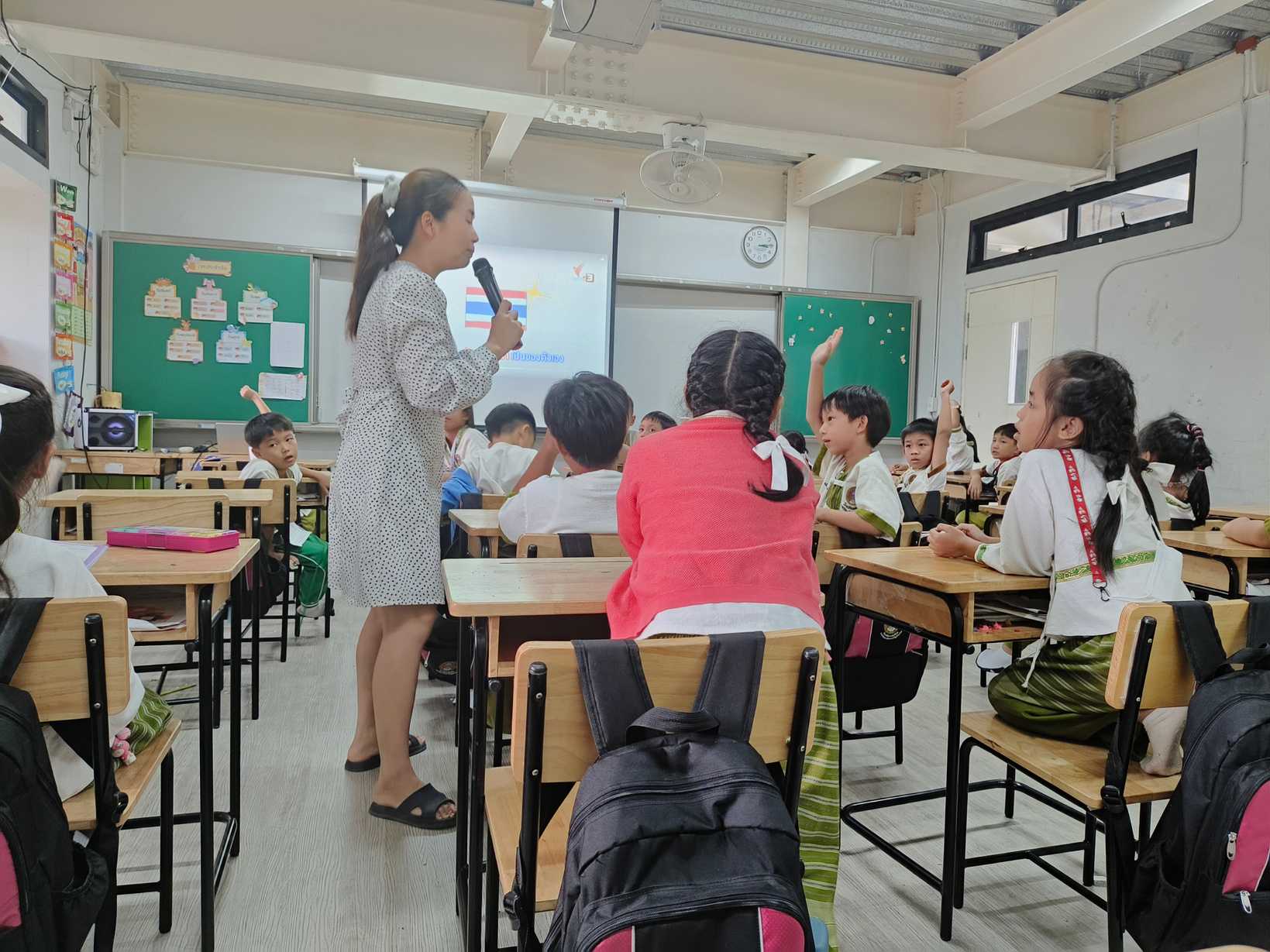
Teacher Nong delivering Science lesson in P1 class
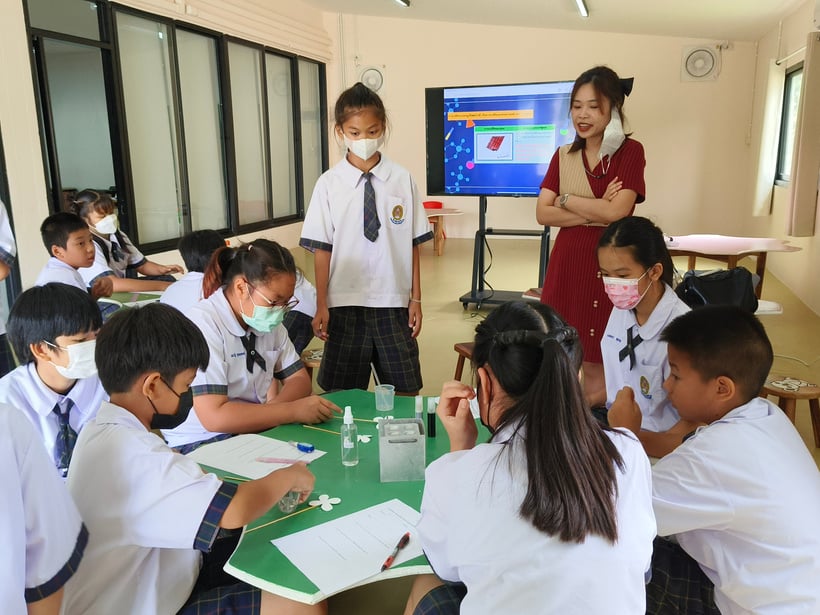
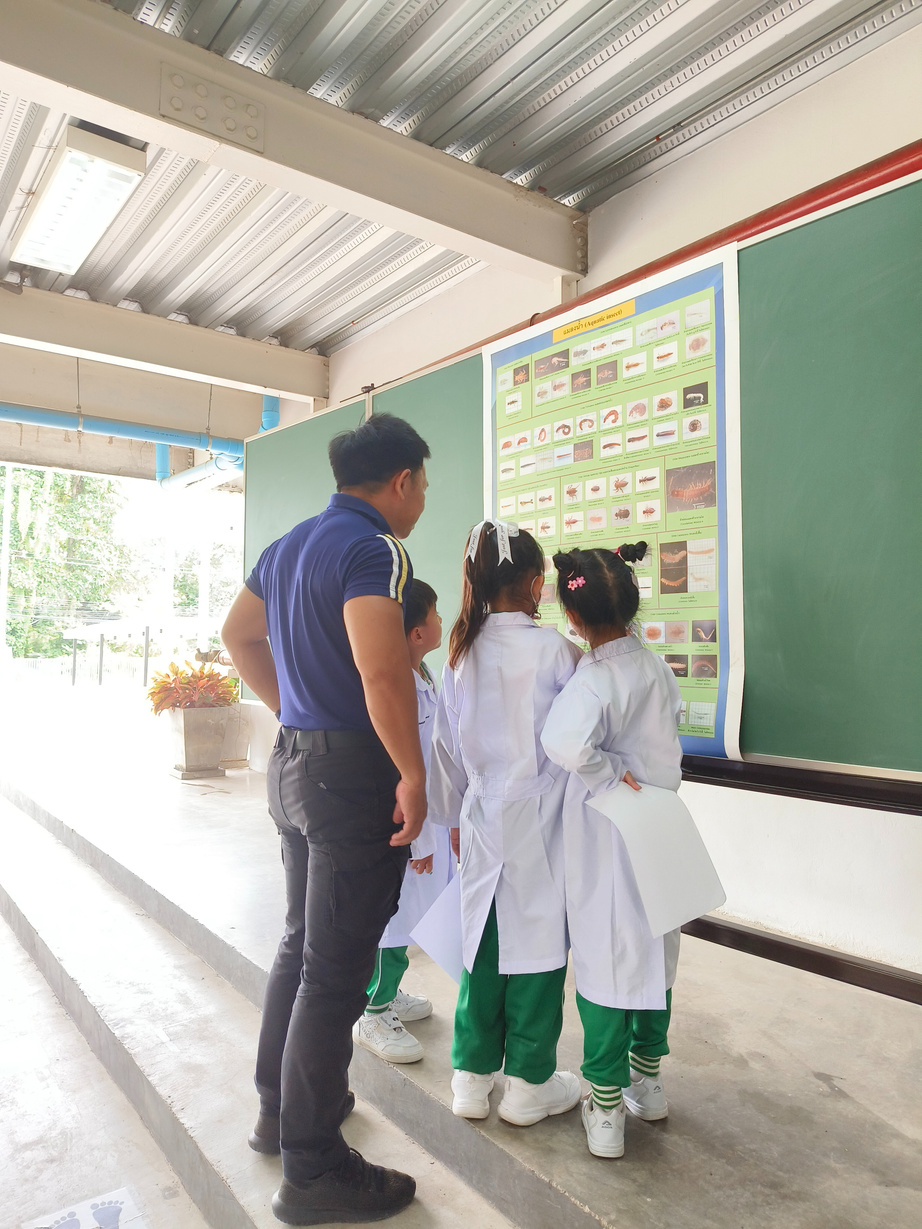
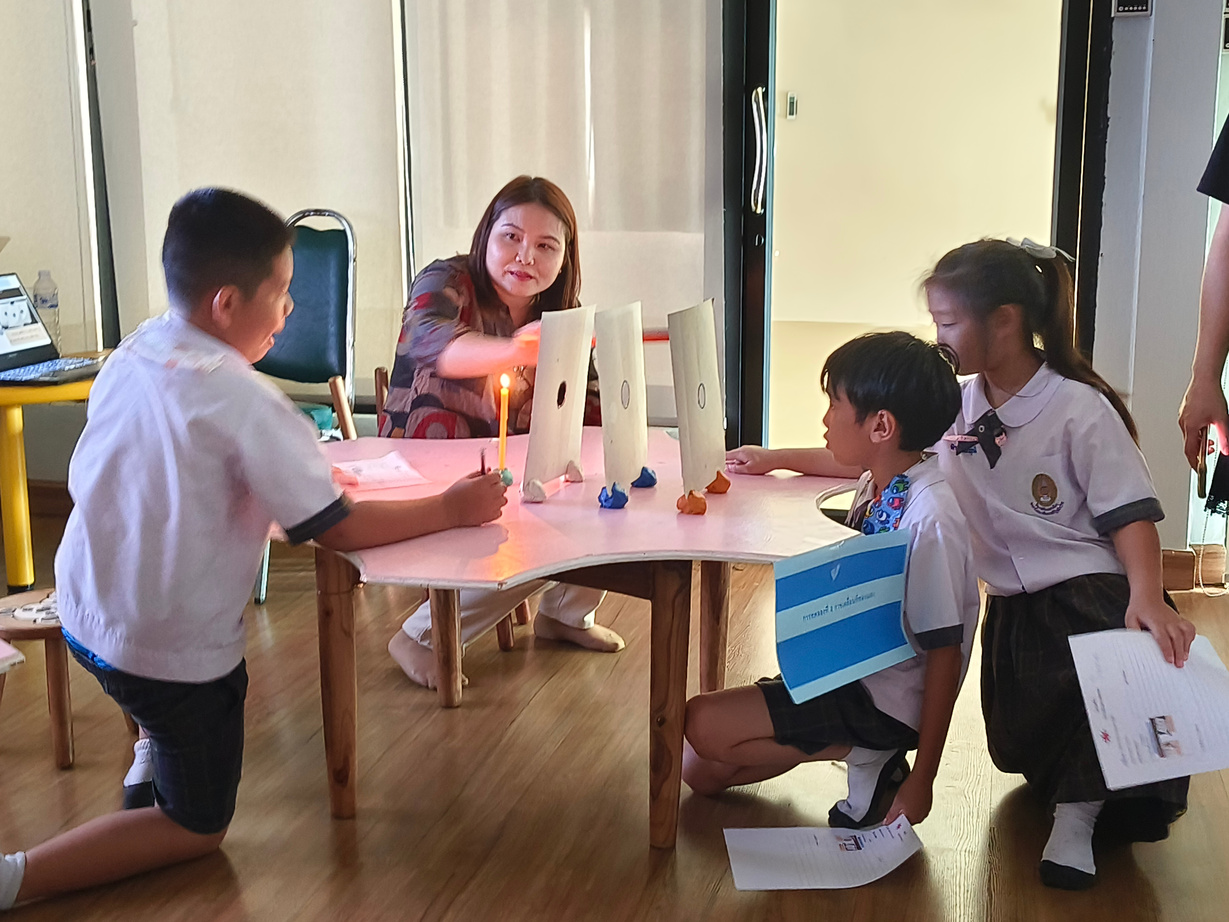
University instructors teaching the students at the Demonstration School
Furthermore, the Demonstration School has an existing arrangement with Lampang Rajabhat University. On Mondays and Tuesdays, professors and instructors from the university teach at the Demonstration School, particularly in the Science and English classes. This setup brings a wealth of academic expertise and experience from the university level, enhancing the quality of education provided. It promotes collaboration between the Demonstration School and the university, serving as an avenue for sharing the best practices, resources, and research, and ultimately contributing to a more comprehensive and enriched learning environment.
Moreover, the teaching system of the Lampang Rajabhat University Demonstration School follows a structured process that begins with instructional planning and the development of instructional materials. This is then followed by the lesson implementation; in this phase, the student learning activities are aligned with the objectives and competencies of the curriculum. In assessing student learning and the effectiveness of the teaching delivery, evaluation is done at the end.
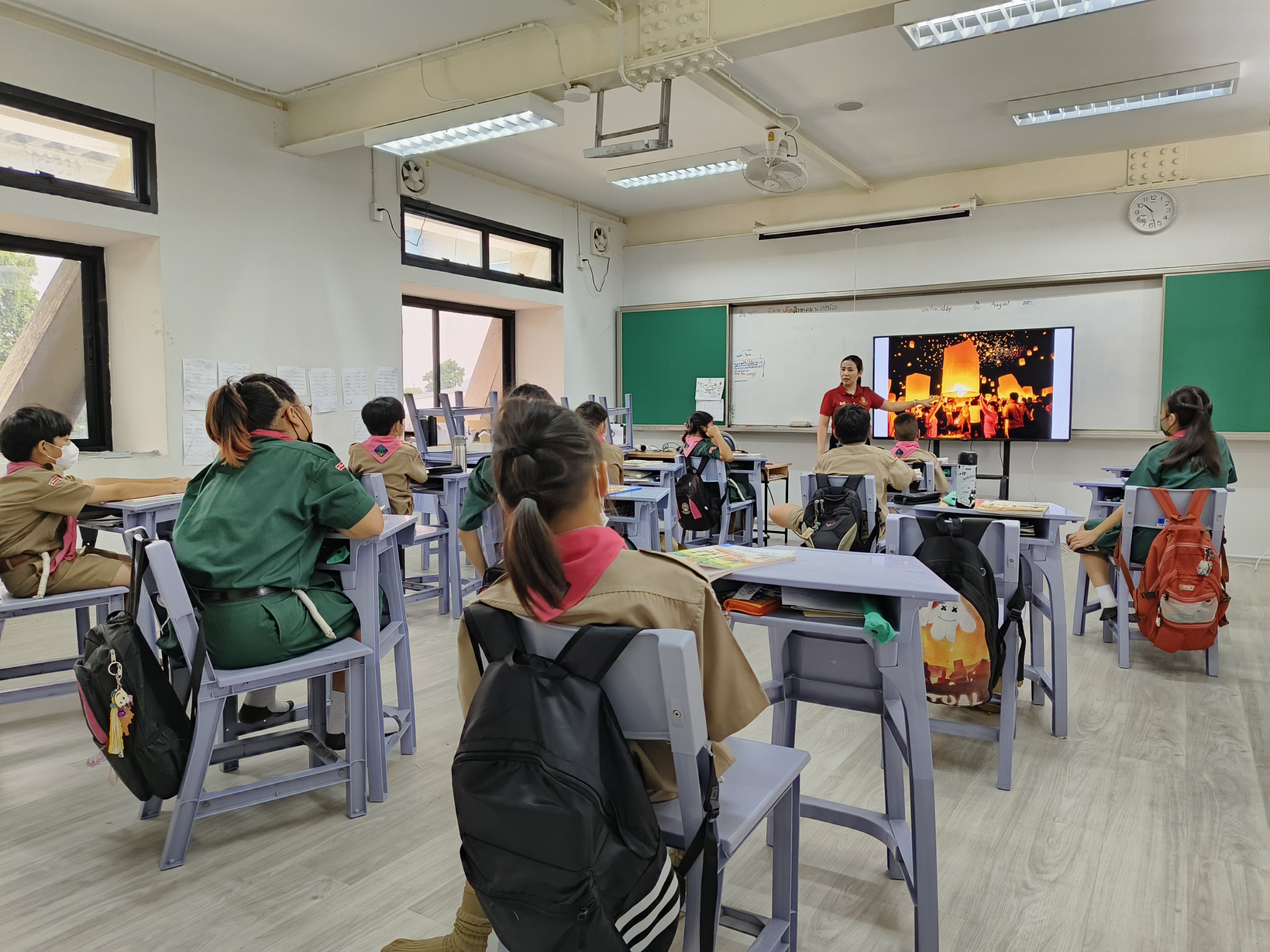
Teacher Nong using SMART TV in presenting the Science lesson


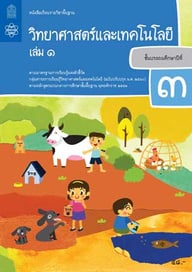
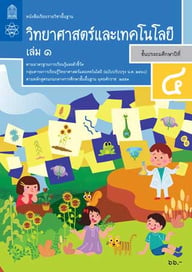
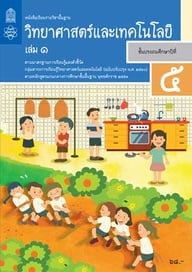
materials and other learning resources
The teacher uses a Science textbook as a teacher’s guide, students also have their learning material textbook and a separate workbook that has activities and tasks to be accomplished. There is a library where students can borrow and use books. Each classroom is equipped with both a traditional blackboard and a modern whiteboard for interactive learning. Furthermore, every classroom is equipped with overhead projectors, speakers, and microphones, facilitating dynamic and engaging lessons.
The school is also equipped with large-screen televisions that enhance presentations and visual learning experiences. Additionally, there is reliable internet connectivity available, which the teacher can utilize for delivering lessons and accessing digital resources. They also have a stock room that houses equipment for physical activities, art activities, experiments, and a lot more.
Science textbooks used by the teacher in the instruction
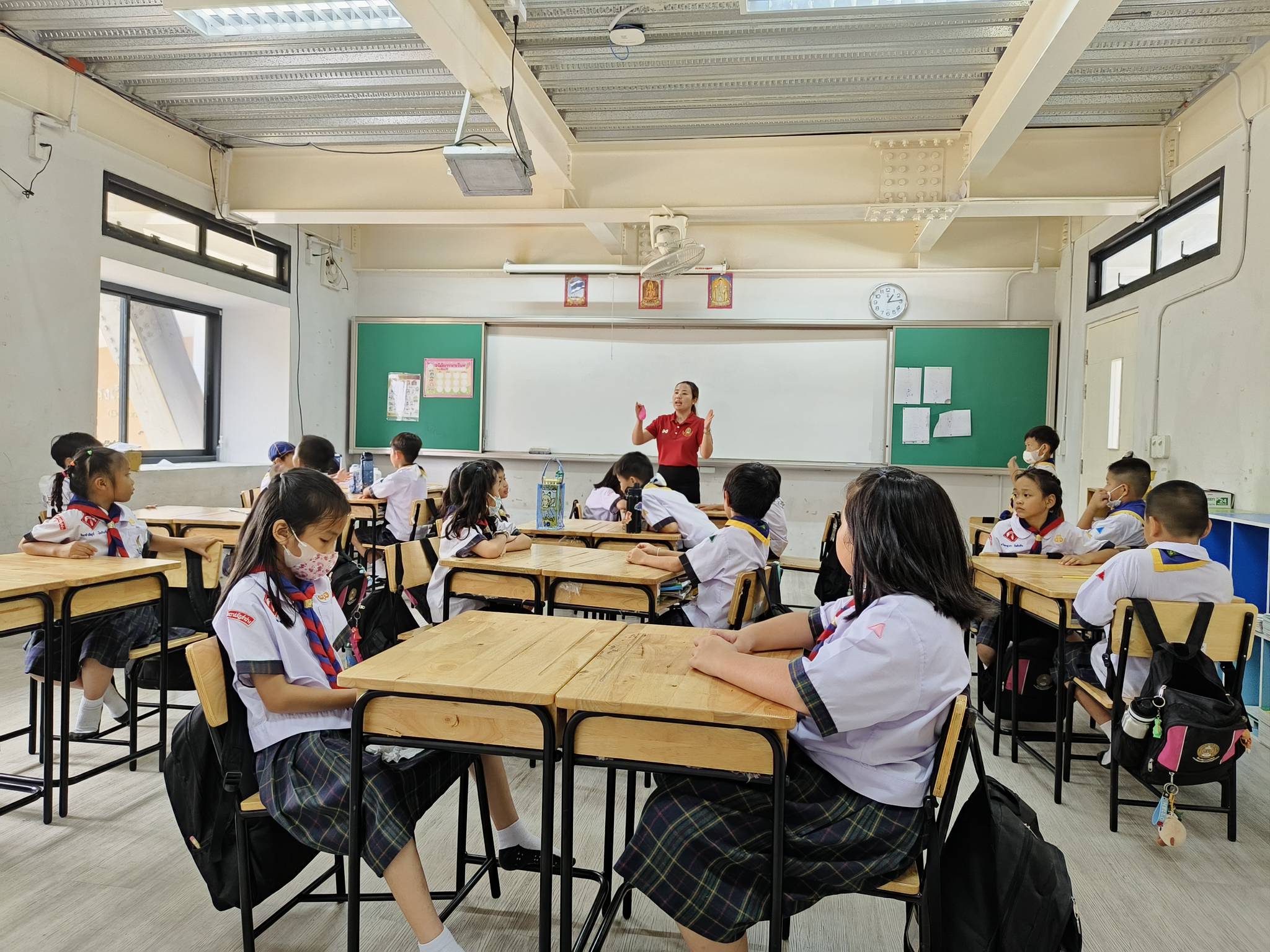
pedagogical
Contents
1.1 TEACHING METHODS
There is no single pedagogical strategy that is a one-size-fits-all solution. Teachers must know an array of pedagogical strategies appropriate for teaching the Science content and addressing the learning needs of the students. My cooperating teacher, Teacher Nong, employs diversified teaching methods in the teaching of Science across all the primary levels.
During my field study or observation in the Science classes, the teaching methods my cooperating teacher employed were independent learning, cooperative learning, experiential learning, inquiry-based learning, project-based learning, and ultimately technology integration. These methods are anchored on the student-centered teaching method, which emphasizes active learning and places the student at the forefront and the center of the teaching-learning process. In this teaching method, the teacher serves as a facilitator, guiding students as they explore the learning activities.
In the lesson delivery, the teacher starts by posing questions to assess the students' prior knowledge, which is essential for building on existing knowledge. The teacher encourages students to ask questions and engage in critical thinking. The learning activities designed by the teacher encompass tasks that require students to apply information and observations from the learning materials and laboratory exercises. These tasks are rooted in inquiry-based learning. The teacher also let students answer activity sheets and accomplish workbooks individually, this learning activity puts forth independent learning. In this strategy, the learners worked individually to accomplish the tasks and answer the guide questions, hence, taking control of their own learning. In teaching Science, I observed that learning activities are usually laboratory-based which emphasizes experiential learning. This is manifested in the P1 class when the students observed aquatic insects under a compound light microscope. They then illustrated what they saw in the microscope. Another instance is that the students worked in groups and performed different laboratory experiments on reversible and irreversible changes particularly creating a slime, investigating the basicity and acidity of substances, density, and the boiling point. In this strategy, learners were able to experience firsthand the application of scientific concepts. I deem “learning by doing” by John Dewey as a groundbreaking educational philosophy. Applying this, the teacher provided materials and instructions, allowing students to engage in a hands-on activity. Immersing the students in hands-on activities makes them develop and enhance their practical skills which they could actually use in the real world. Cooperative learning was also integrated into the instruction by letting the students work in groups. In the group activities, students share ideas with each other and help each other out in answering the tasks provided which then encourages peer learning and engagement. This strategy further helped in the development of learners’ critical thinking, problem-solving skills, and communication skills. Project-based learning was also employed by the teacher. The teacher gave the students a project or output to work on, which served as an opportunity to apply their knowledge and skills in a new context or situation. Students worked together on these projects, which helped reinforce their understanding and improve their scientific skills. This is demonstrated when the teacher allowed students in P2 class to work in pairs and create papier mâché using shredded paper, water, and glue; and animal fossils using animal mold, clay, water, and plaster of paris.
Technology was also integrated into the teaching by utilizing technological tools in presenting the Science content. The teacher uses educational tools such as Canva in creating and designing the presentation. The teacher facilitates lesson presentation using a projector. The teacher also uses an internet connection to present videos and pictures to provide visual presentations of the topics being discussed. The teacher also utilizes an online timer to time the activities. Traditional technology was also used by the teacher such as laboratory materials for experiments, markers and boards, and visual materials. Moreover, whenever there are misconceptions that arise, the teacher immediately clarifies them and explains them further to promote a deeper understanding of the topic. This is manifested when the teacher corrected misconceptions about measuring the weight during the laboratory activity. The misconception emphasized was when the students are measuring the weight, they should not look above and below the spring balance. They should do their reading by looking at the device at an eye level. The teacher then demonstrated the right thing to do.
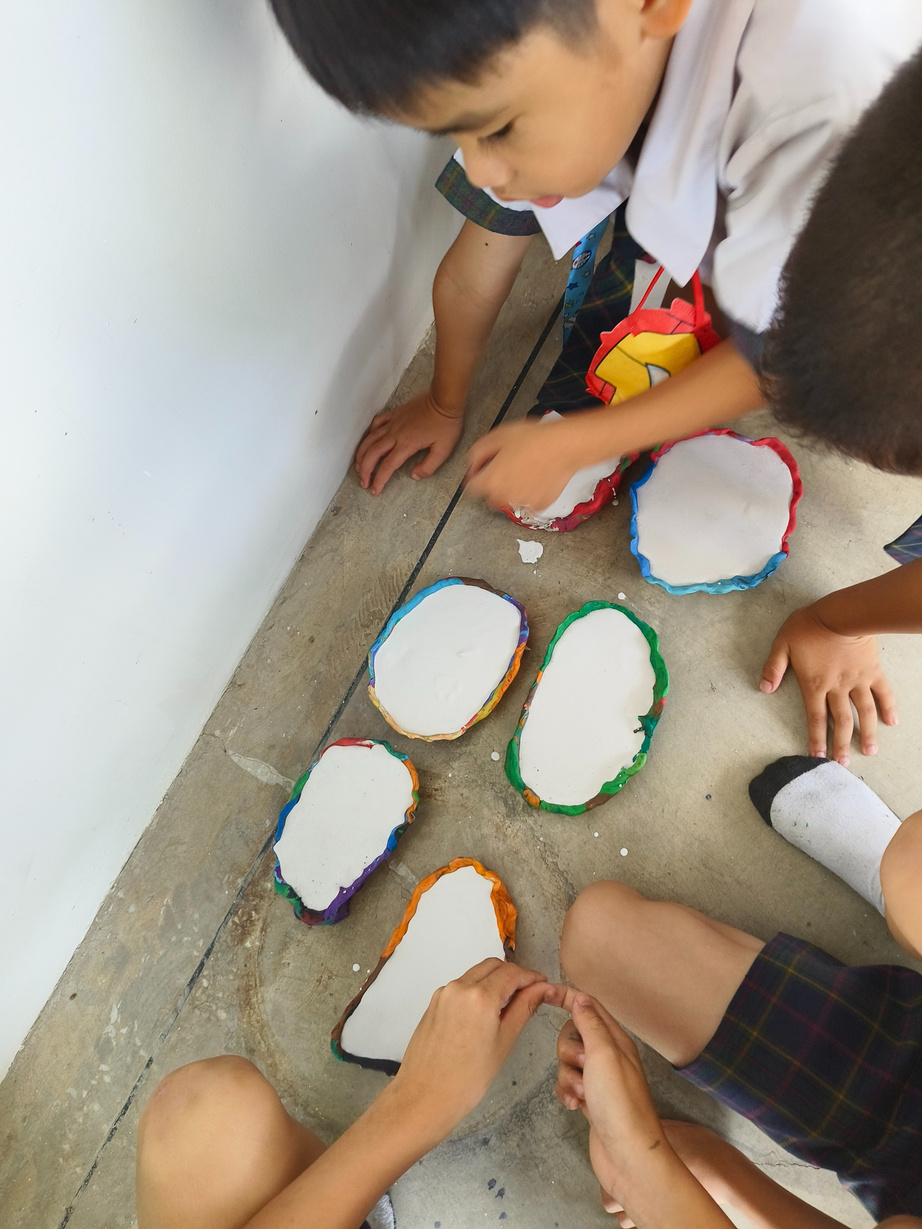
students in action
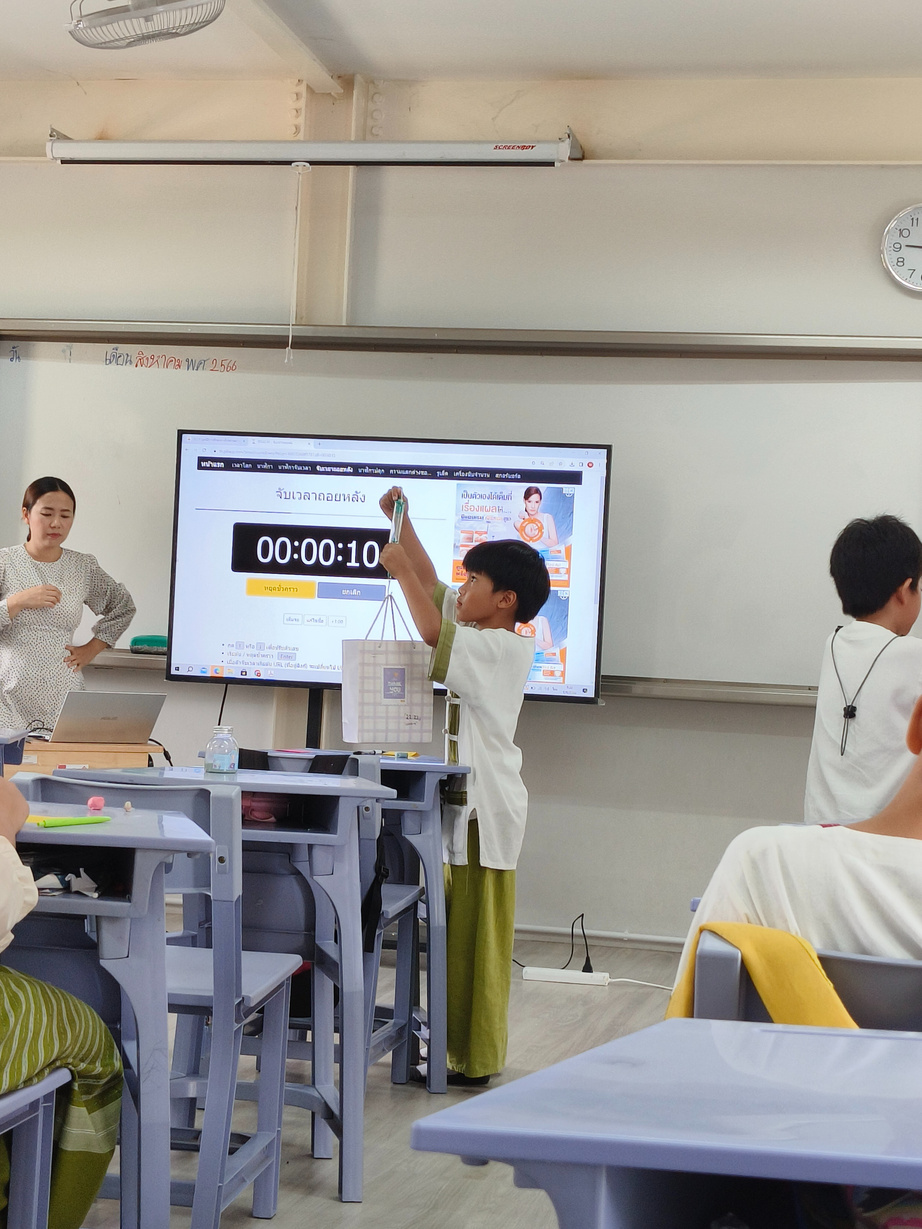
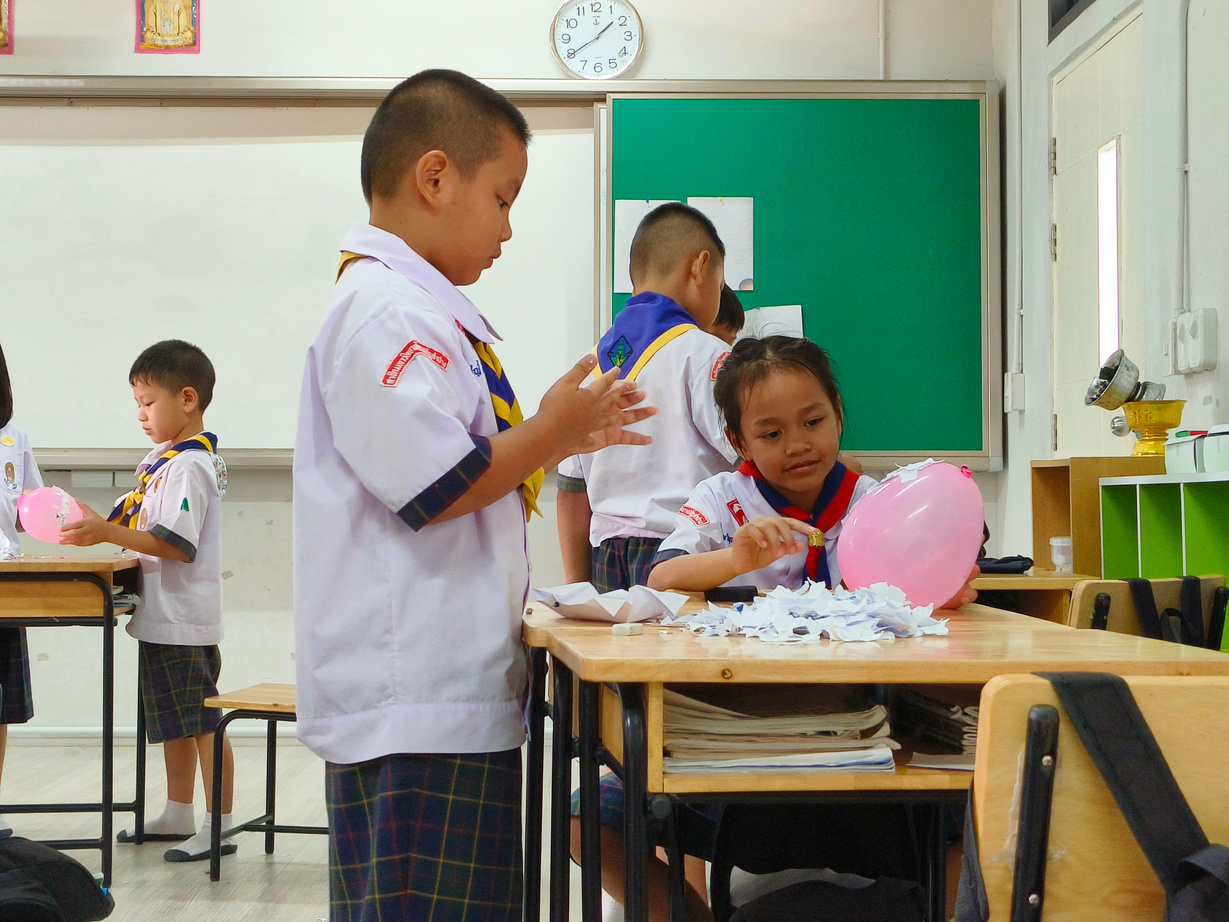

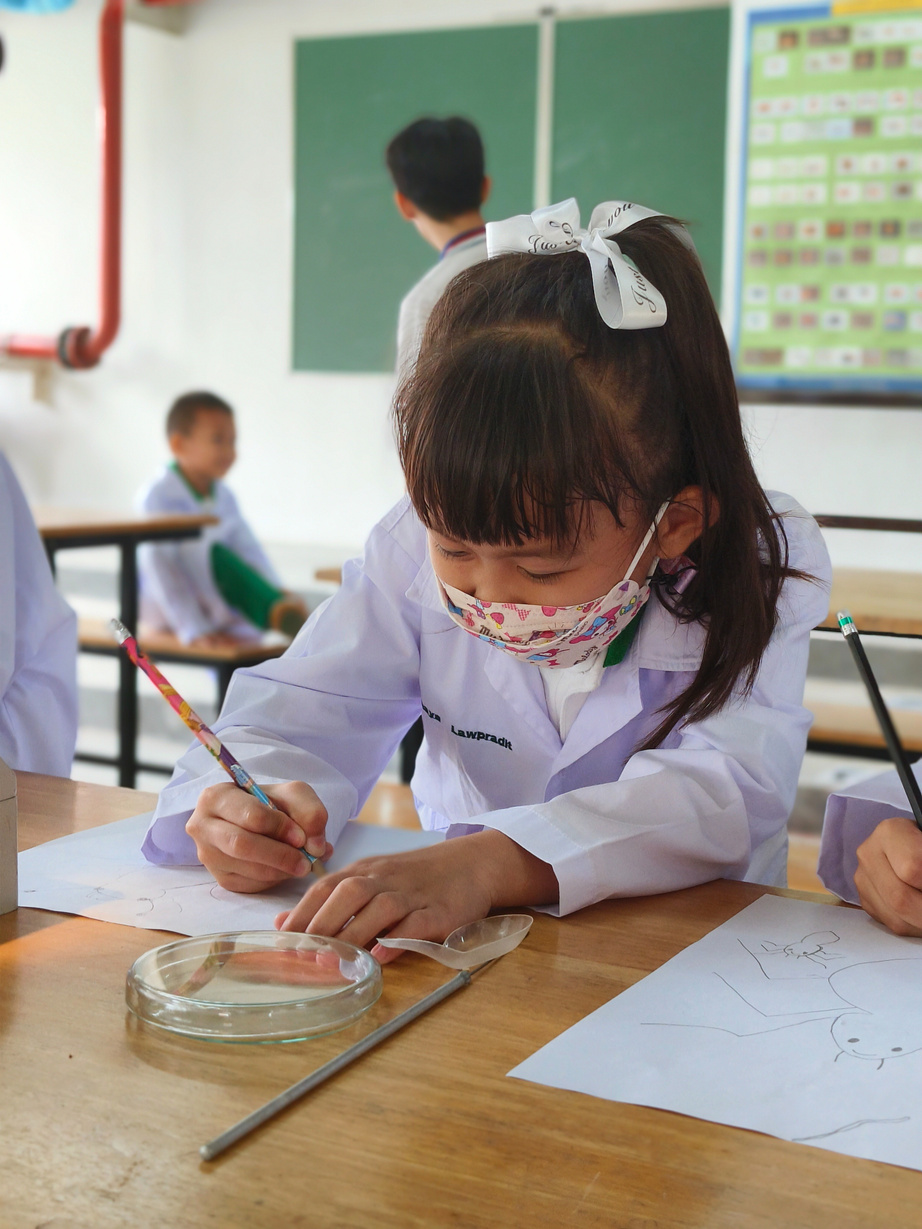
1.2 Learning materials and innovation

The teacher primarily uses the learners’ textbook as learning material. The learning textbook is entitled “Textbook for Basic Science and Technology,” authored by the Institute for the Promotion of Teaching Science and Technology (IPST) and published by IPST. This basic subject learning resource for the Science and Technology Learning Area is based on the Revised Edition BE 2560, hence, this educational resource is aligned with the curriculum standards. The textbook for learners contains discussions of the science topics, guide questions, procedures of the laboratory experiments, and also quizzes that serve as learning checkpoints.
Science textbooks used by teacher in P1 class
In delivering the content, the teacher does not solely use the learning materials from books, but also supplements the discussion with prepared presentations, videos and pictures from the internet, and instructional materials. The teacher also used realia in delivering content. In demonstrating irreversible change, the teacher allowed students to actually cook an egg using an pan and induction stove. As part of innovation, the university professor created an instructional device that demonstrates the behavior of light
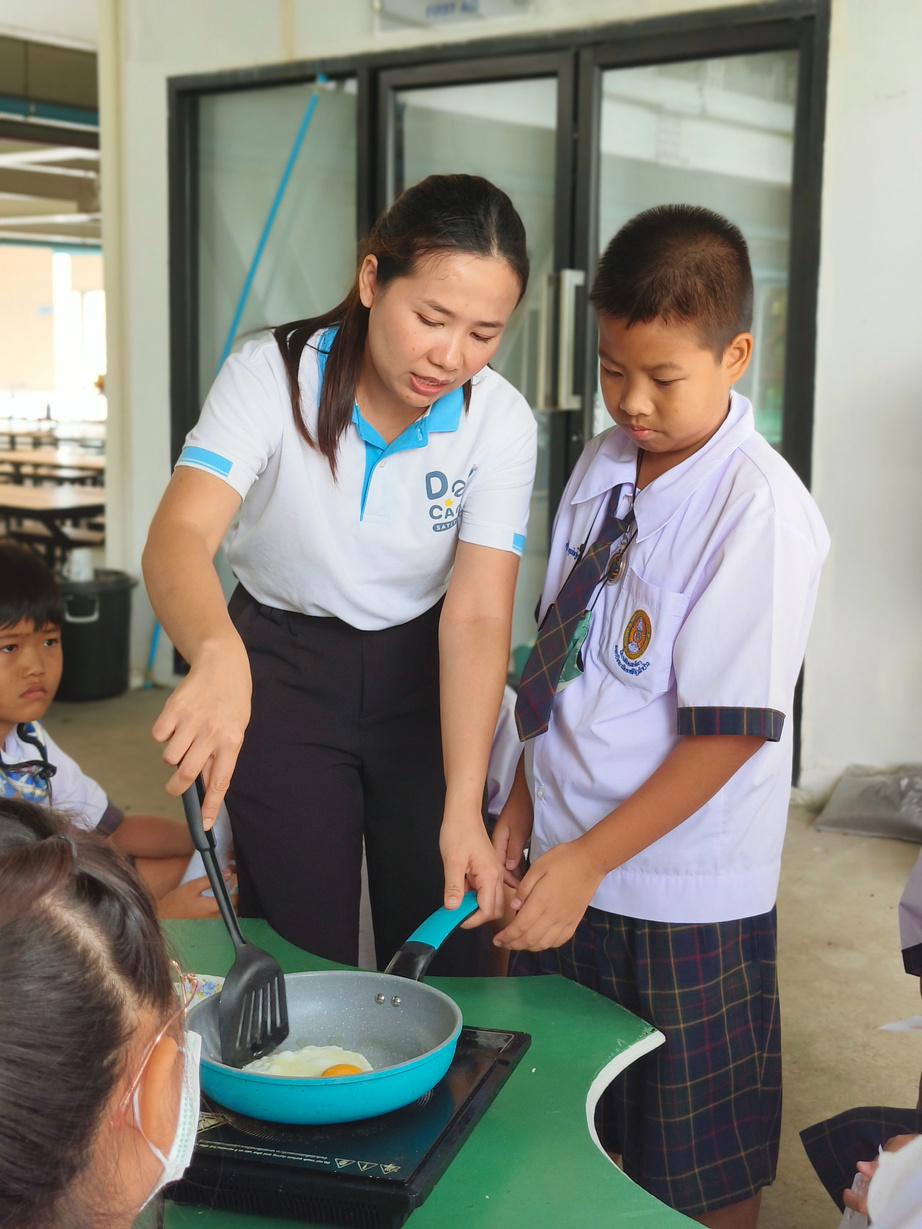
Teacher Nong assists her P5 student in cooking an egg to demonstrate irreversible change
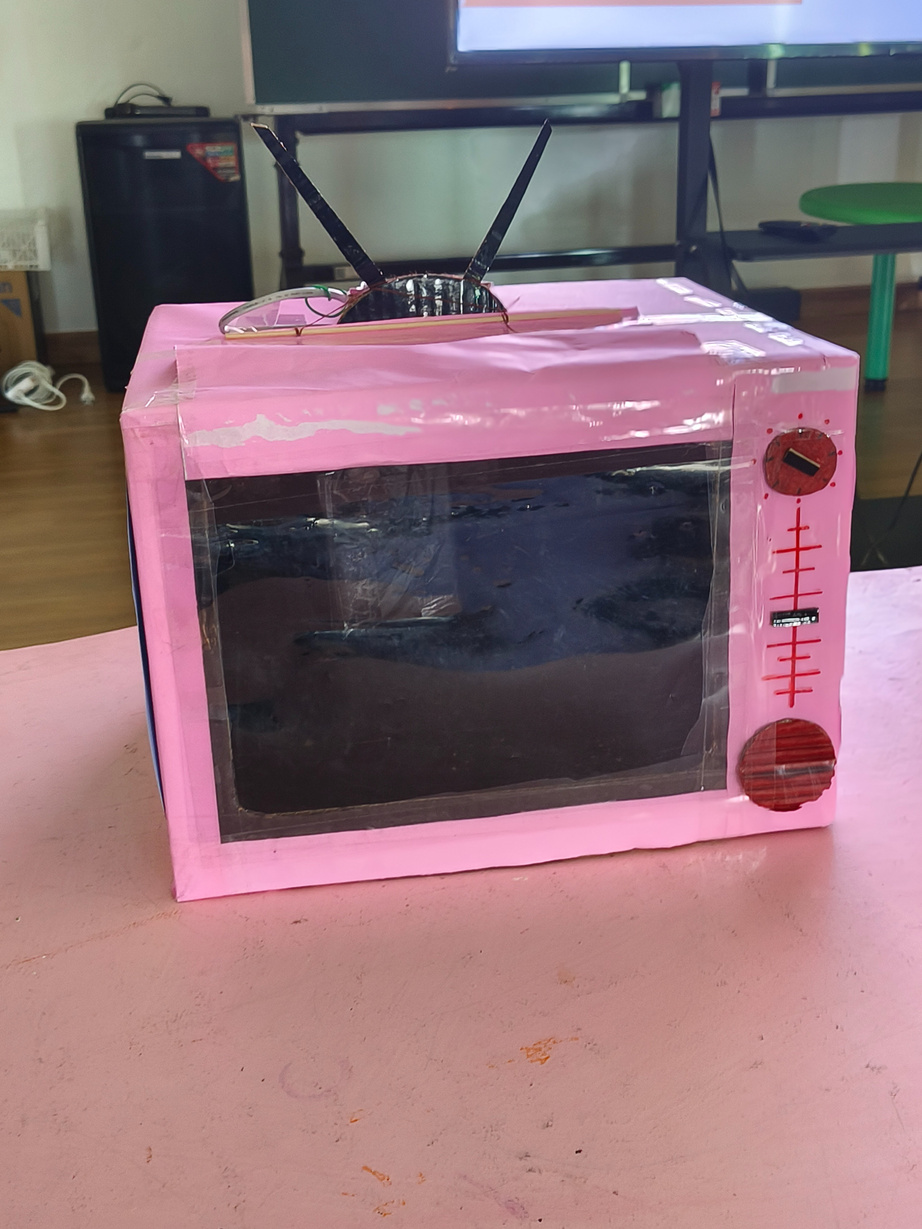
Instructional device used by the instructor to demonstrate the behavior of light in air
1.3 sources of learning and technology
In addition to the learners' textbooks, teachers enhance the learning experience by supplementing it with presentations. They leverage internet connectivity to seamlessly display relevant pictures and videos related to the discussed topics. The teaching tools include overhead projectors and SMART TVs for visual materials, as well as speakers and microphones for clear audio delivery during lectures.
Furthermore, alongside these modern technological aids, teachers also utilize traditional tools like visual aids, blackboards, and whiteboards for teaching purposes.
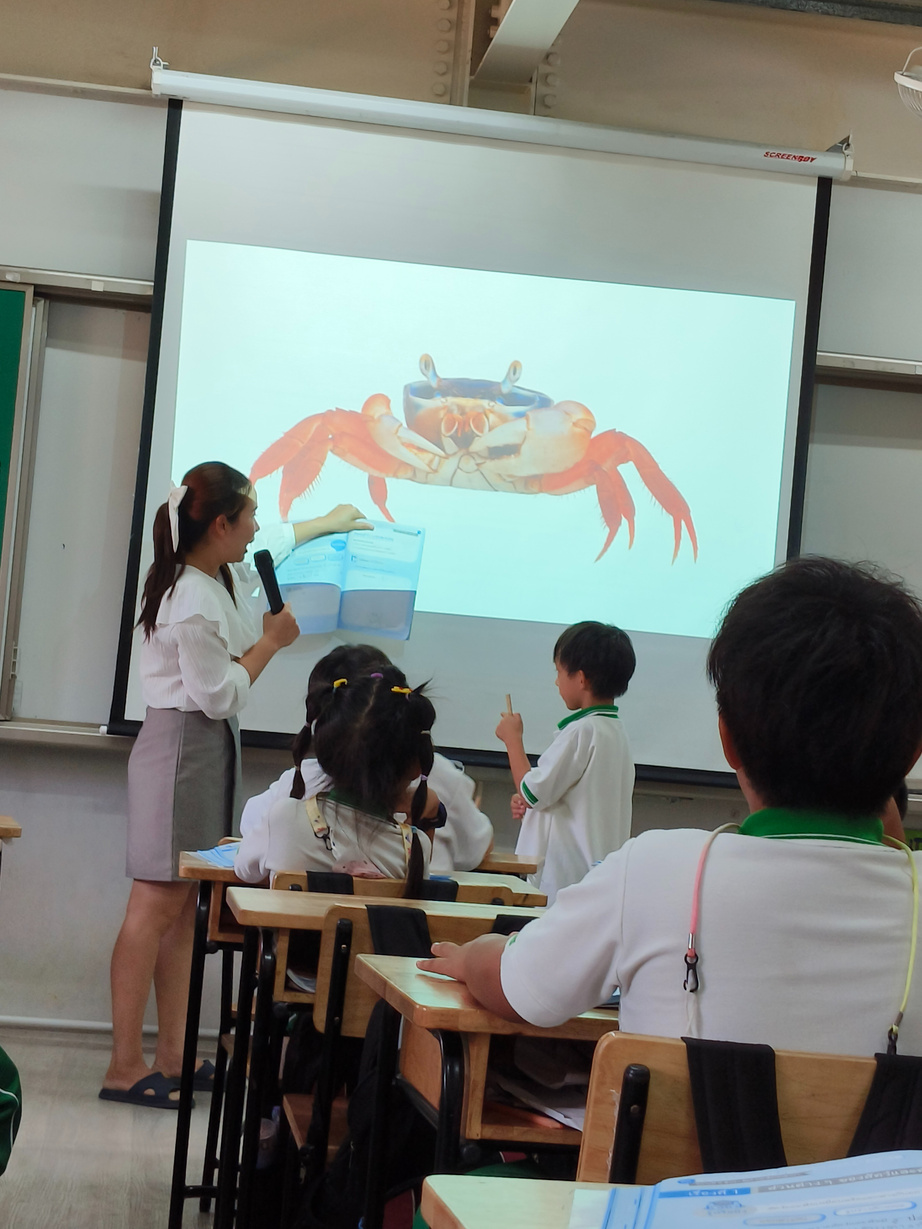
1.4 authentic assessment
Teacher Nong uses overhead projector for her presentation
It is imperative that students’ knowledge and skills are applied in real-world contexts through authentic assessments, rather than being evaluated through traditional standardized tests or exams. Authentic assessment is designed to gauge students’ ability to practically apply what they have learned in a meaningful way. Through an authentic assessment, we are able to really prepare the students for the real world that requires them to have problem-solving skills, critical thinking, and creativity.
In my observation of the P1 class, the university professor employed authentic assessment when he allowed the students to observe aquatic insects under a compound light microscope. The students are taught how to prepare the slides, put them under the microscope, and manipulate the microscope for an optimum observation experience. In their observations, the students are tasked to illustrate what they have seen under the microscope. In this learning activity, students use high-end technology and improve their own creativity. I was actually amazed because, at a very young age, students are immersed in the use of such technological devices. Another instance of authentic assessment is when the students in the P4 class had a moving exam on measuring the weight of an object. The students used spring balance to measure the different objects inside a paper bag. The students had an actual experience of reading and recording the weight of the different objects.
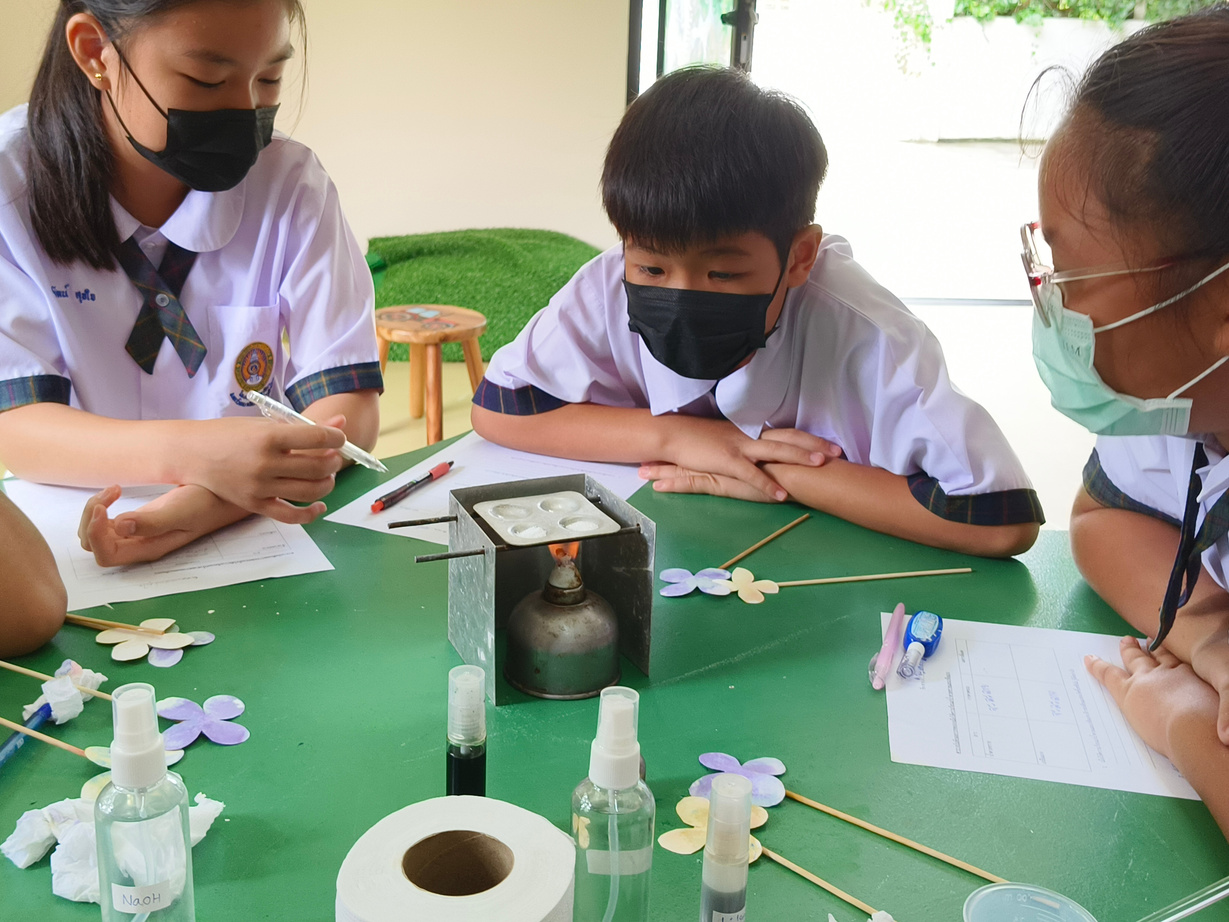
P5 students conducting a laboratory experiment
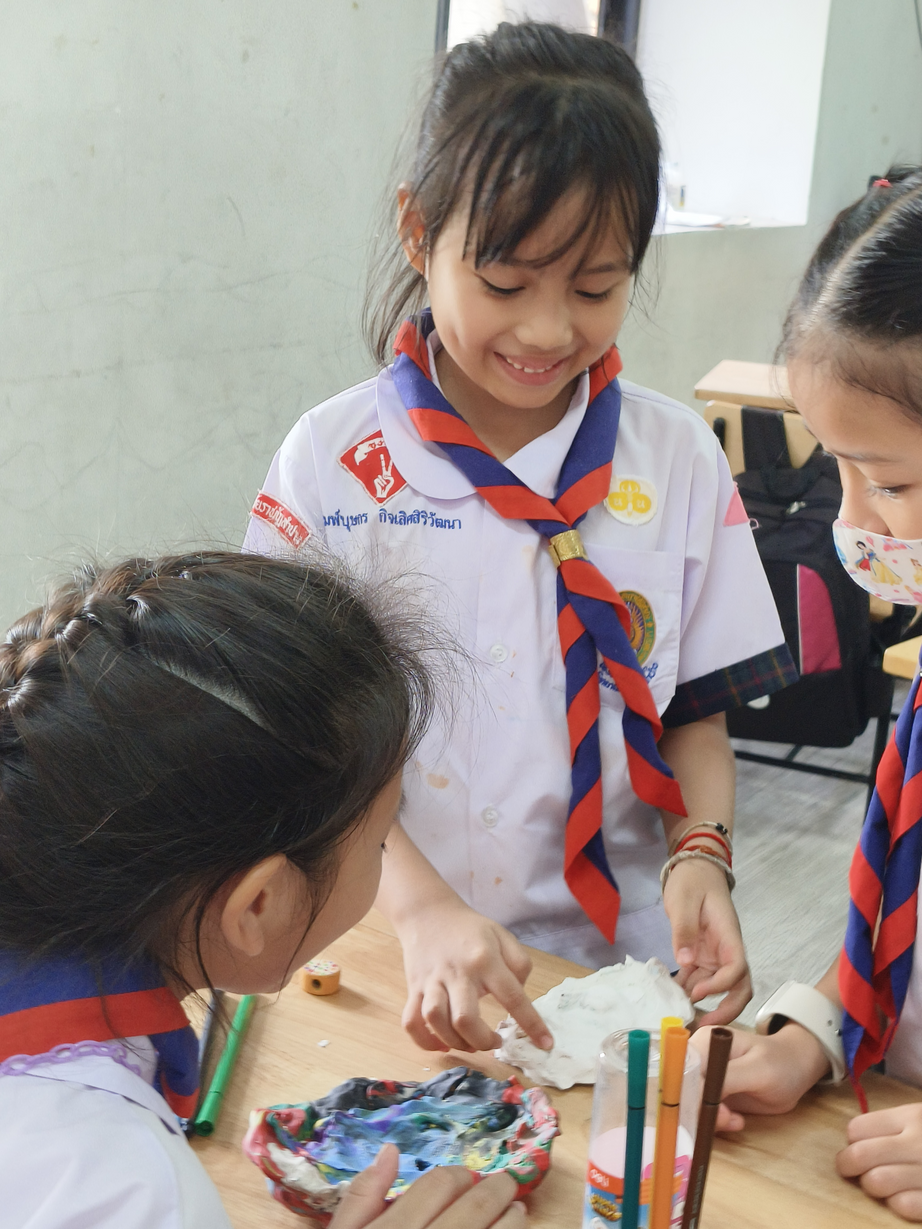
Another authentic assessment I observed is that when the students in the P5 class are tasked to demonstrate irreversible change through cooking an egg. The activity does not just demonstrate a chemical reaction, but also served as an avenue to teach the students on how to cook food. This is authentic, because it aims to teach practical skills to students which they can use in the real world.
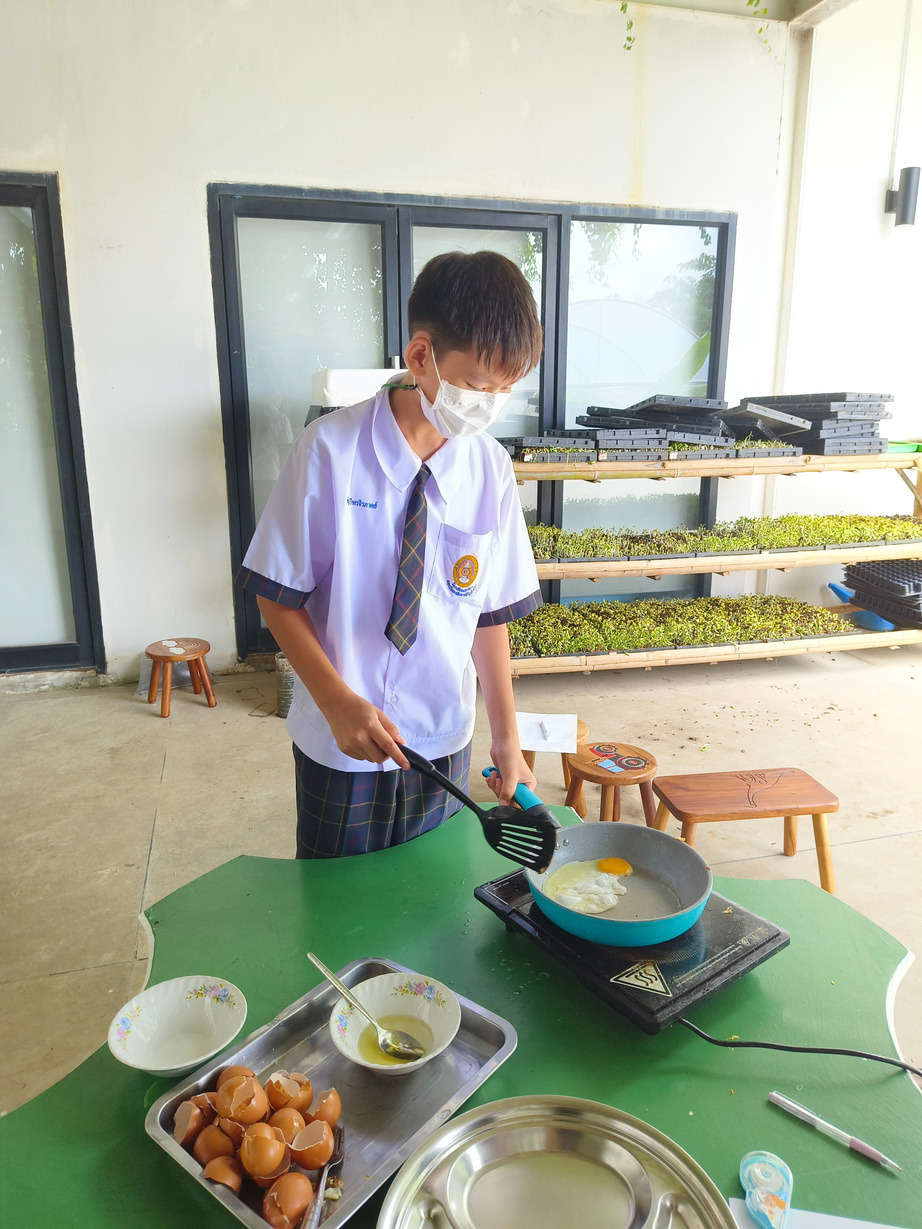
P2 students create an ouput on animal fossils
This is Tono, he is a P5 student who had his first cooking experience during the Science class on irreversible change.
At first, Tono was hesitant to try cooking because he did not know where to start. However, my cooperating teacher helped him patiently with the task. In the end, Tono was able to cook egg for himself.
classroom
management
The teacher attends to the students’ misbehavior on a positive note. The teacher calls out the student politely and the students will settle down. Additionally, whenever the classroom becomes noisy when the students are doing the learning activities, particularly the group activities, the teacher does not compete with the academic noise but rather allows students to explore and interact with each other.
I personally believe that this is something good— to not compete with the academic noise. The teacher must allow students to freely communicate themselves and learn collaboratively. However, that still requires teachers’ monitoring, and the authority of the teacher in the classroom should also be maintained.
P5 student’s first experience of cooking an egg
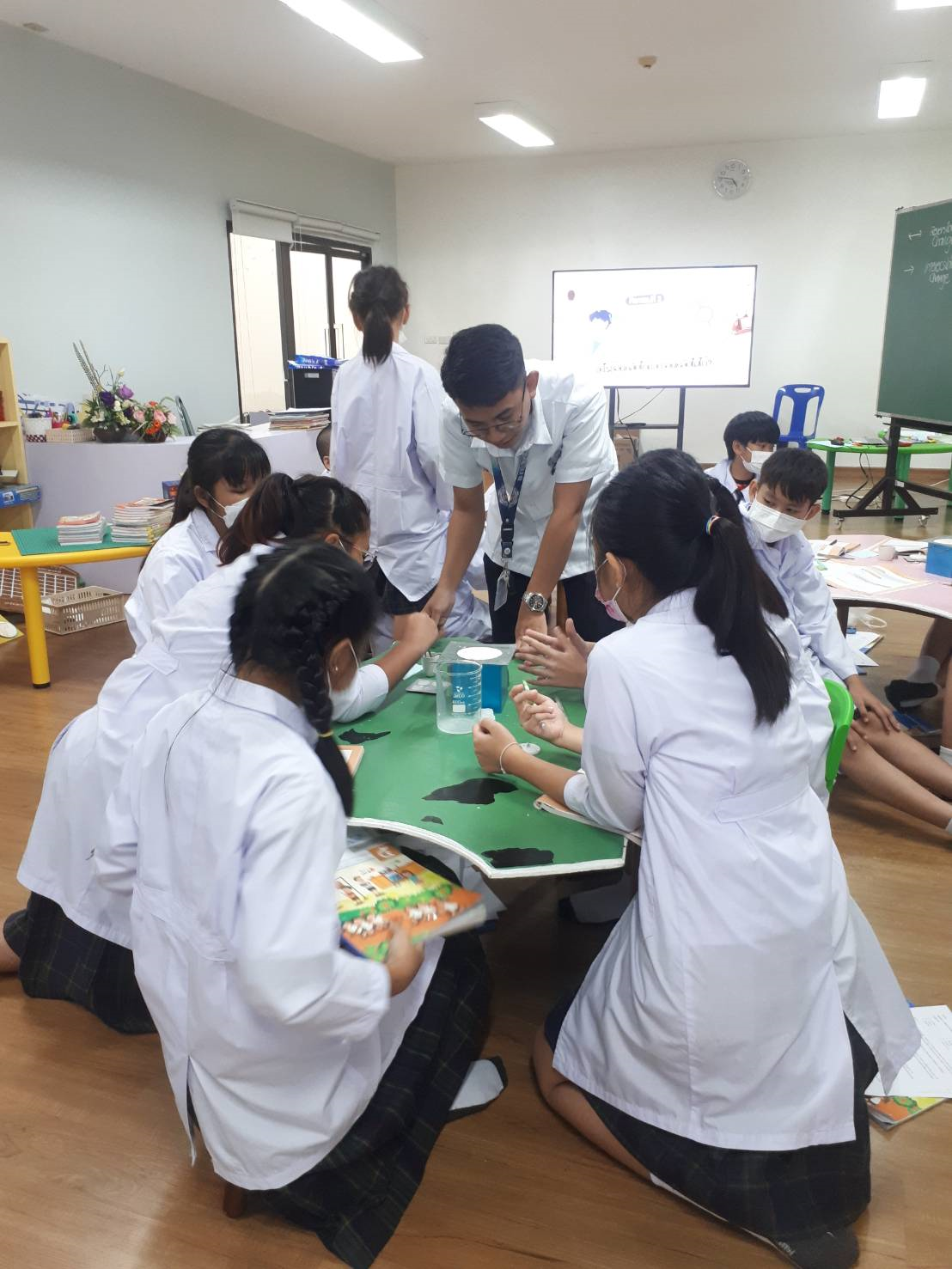
teaching
Practice
translating plan into action
1.1 PROCEDURES OF TEACHING
The procedures of my teaching follow the 7E’s learning model which I incorporated in my lesson plan. Before I start my class, I greet my students and ask them to organize their chairs and tables and pick up trash, ensuring a conducive learning environment. After the pre-activity, the learning activities aligned to the learning objectives follow this procedure:
elicit and engage
A. Reviewing previous lesson/ presenting new lesson
In order to get the attention of the students and be engaged in the instruction, I do ice breaker and games related to the topic. Then I will ask questions to activate their prior knowledge. This segment involves revisiting what students have learned in the previous discussion.
B. Establishing a purpose of the lesson
Here, I present the learning objectives of the lesson so that the students have a clear understanding of what they will be learning. This is crucial because it also determines the success of the lesson delivery.
C. Presenting examples/ instances of the new lesson
In presenting the new topic, I provide contextualized examples or instances related to the lesson can help in making the topic more relatable and understandable for students.
explore
D. Discussing new concepts and practicing skills
In this phase, I introduce new concepts and allow students to explore and interact with the learning material. Usually, in this phase, I let the students collaborate in groups. Learning opportunities include performance of laboratory activities and other hands-on experiences and answering of learning tasks.
explain and elaborate
E. Developing Mastery
After the students work in groups, I let them present what they observed and found out in conducting the activities in the “Explore” part. I will then present a presentation to summarize and further explain the important concepts of the topic. It should be noted that misconceptions should be properly clarified.
I also give the students other learning activities in the form of game or concept map that can be done by group or individually to deepen their learning and ensure mastery.
evaluate
F. Evaluating learning
To test what the students have learned, I give them summative, formative, and authentic assessments. I let them accomplish pen-and-paper test, worksheet, or create an output/ product. In creating assessments particularly the authentic assessments, I make sure that the scoring scale is comprehensive.
extend
G. Additional activities for application/ remediation
To reinforce learning and cater to individual needs, additional activities are provided. The additional activities I provide are application of what the students learned in the discussion.
Furthermore, at the end of the lesson, I entertain questions from the class if they have any, and I summarize and emphasize key points of the topic discussion.
1.2 TIME MANAGEMENT AND ORGANIZING ACTIVITIES
In managing my time in class, I make sure that I am on track by following the procedure of my lesson plan. I also made sure that the learning activities have time allocation.

The allocated time slots I had planned helped me oversee and control the progression of the activities. However, this schedule was flexible and not rigid. There were situations where specific parts required more time than initially allotted, while others were completed more quickly. During these circumstances, deviating from the scheduling of activities is considerable.
In organizing activities, I ensured that the varied learning activities progressed from simple to complex. This approach followed Dale's Cone of Experience, which suggested that students learn better when tasks gradually become more challenging. Starting with concrete experiences and gradually moving to more abstract and complex ones as students became more knowledgeable about the topic was useful. This method helped students achieve a deeper understanding of the subject and supported effective learning by accommodating their varying cognitive abilities.
1.3 CLASSROOM MANAGEMENT
During my teaching internship at the Demonstration School, I realized that managing a classroom could indeed be quite challenging. As a secondary education student responsible for primary-grade students, it was particularly demanding because our training hadn't fully prepared us for the high energy levels of young children. There were instances when the class became a bit unruly and seemed difficult to control. However, as a student-teacher, I managed to maintain authority in the classroom by implementing some positive house rules. I established a classroom agreement with my students, kindly reminding them to stay attentive and actively participate in various learning activities. I also emphasized that, when they needed to leave the classroom, it was important to seek my permission. Additionally, I made an effort to engage with students who seemed less focused by asking them questions related to the lesson content, which helped them regain their concentration. To address noise levels, I introduced a gentle "Shhhh" signal and the phrase "The water is flowing." This signaled to the students that unnecessary noise needed to be reduced, and it helped in maintaining a more conducive learning environment.
One valuable lesson I learned during this immersion was that teachers should avoid competing with what I called "academic noise." Academic noise was a positive sign, indicating that students were actively learning and engaged in the instructional process. Encouraging students to express themselves freely contributed to a more inclusive classroom environment. Driving students' active learning promoted self-motivation and reinforced positive social interaction.

Setting of house rules before the start of Science class in P1
1.4 PROBLEM-SOLVING WHILE TEACHING AND STAYING IN THE DESIGNATED SCHOOL
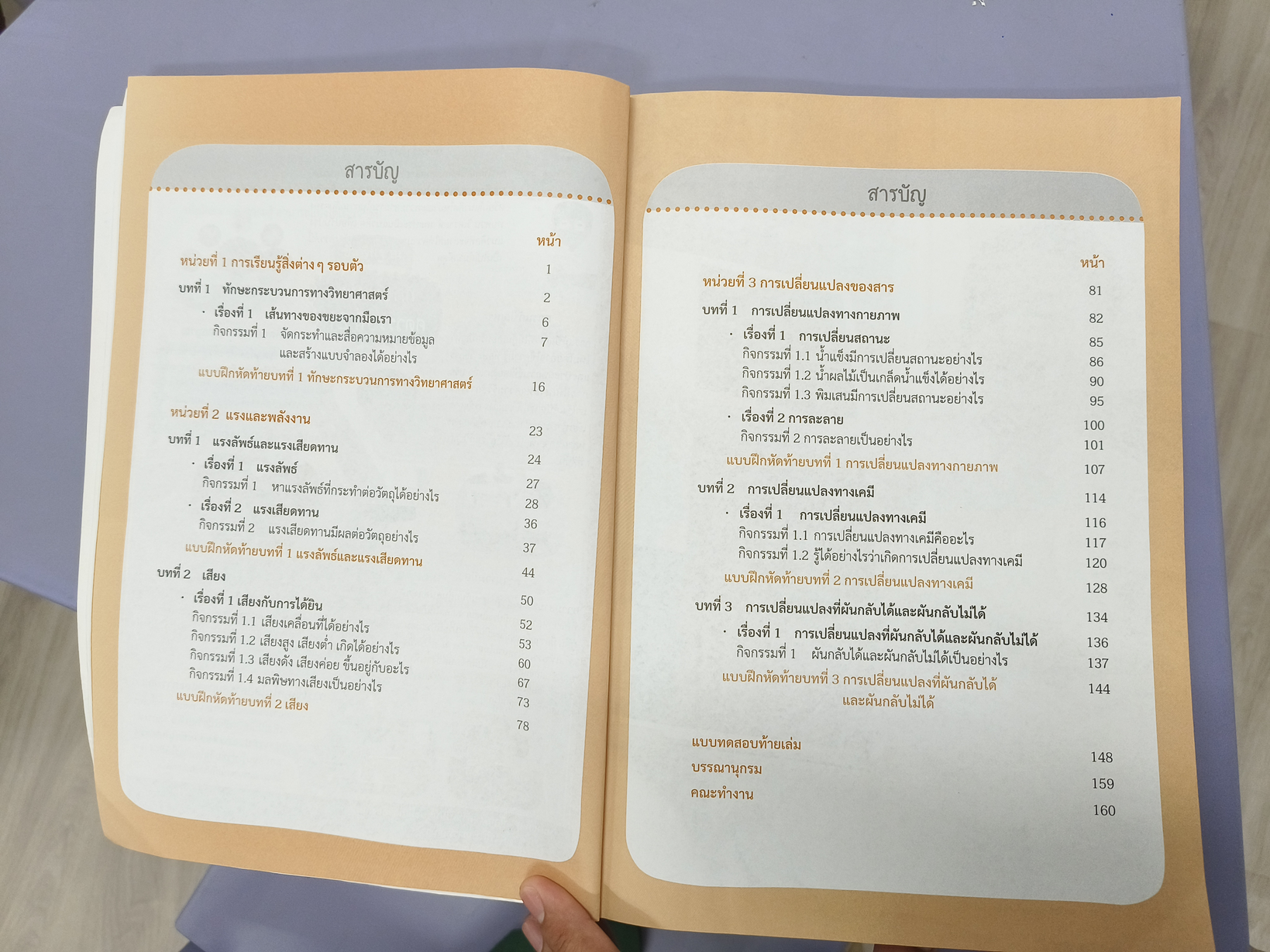
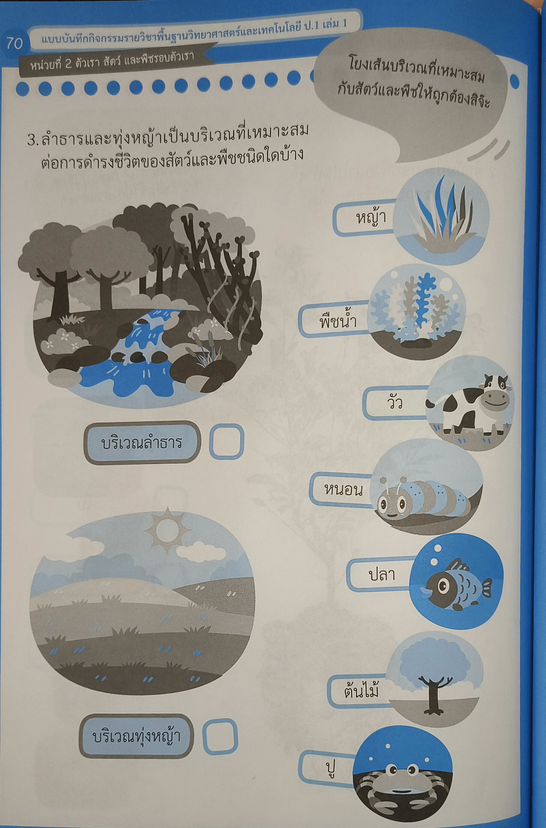
Science Textbooks written in Thai
As a pre-service teacher taking up Bachelor of Secondary Education, it was a challenge for me to handle Science classes at the primary levels. I was assigned to the Demonstration School of Lampang Rajabhat University where there are only Kindergarten, Pre-School, and Primary Levels (Grade 1 to Grade 5). The learning competencies delivered in these levels are very different from what is delivered in the secondary levels. To resolve this issue, I was able to unpack the learning competencies and design learning activities appropriate to the level of my students. It was also a challenge for me to handle Science classes at primary levels wherein the medium of instruction is Thai. The students’ first language as well as my cooperating teacher's is Thai language
and they really struggle in understanding and speaking English. Aside from that, their Science textbooks are written in Thai. What I did is that I used language translation software in translating Thai texts to English. However, there were instances that the translations were not accurate, so I really had to translate it for other several tries. I also sought help from Teacher Emma, a native English teacher from the United States who can speak and understand Thai. In delivering the content and communicating with my students and the teachers at the Demonstration School, I had to talk slowly, simplify words, and restate our statements.
In creating instructional materials and worksheets for the different learning activities, initially, I had a problem on where to get resources. However, my cooperating teacher and the rest of the teachers at the Demonstration School allowed me to use the available resources at the office. Given also that the laboratory school do not have a laboratory room and lacked some laboratory equipment, I was able to source out laboratory materials from the Faculty of Science of the Lampang Rajabhat University.
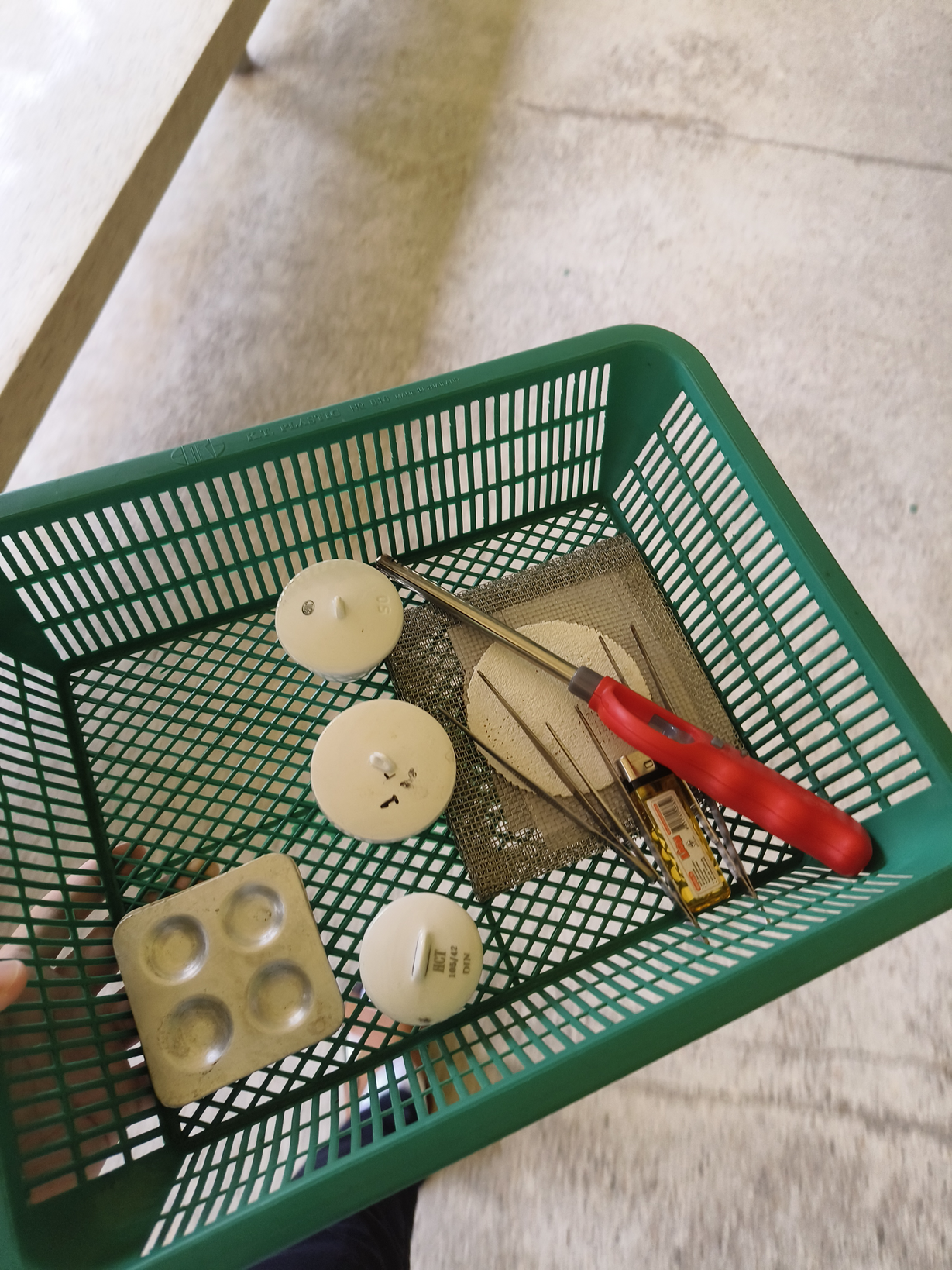
Laboratory materials I borrowed from the Faculty of Science for my final demo teaching
Content and Language Integrated Learning
CLIL
The integration of Content and Language Integrated Learning in instruction was first introduced to me in our thesis by our adviser, Dr. Arnel Lorenzana in the Philippines. Content and Language Integrated Learning (CLIL) is a method that teaches both a subject like science and a new language at the same time. Students learn not only the subject matter but also a foreign language, making it a two-in-one approach. I think that it is something revolutionary to teaching and learning so I decided to integrate it as well in in my actual lesson delivery in Thailand.
I incorporated CLIL in the teaching delivery by means of putting Thai translations of the English texts that I used in my presentations. I also encouraged the students to speak in their native language (Thai) and I just used a software application to translate oral speech. I also tried my best to learn Thai words and know how to pronounce them and use it my delivery of the content.
This highlights studying the content (Science) and learning a language (English) at the same time— integrating two subjects. I incorporated CLIL in the teaching by means of translanguaging and code-switching in the instruction. I explicitly translated the key terminologies in the instruction into the native language of the students which is Thai.
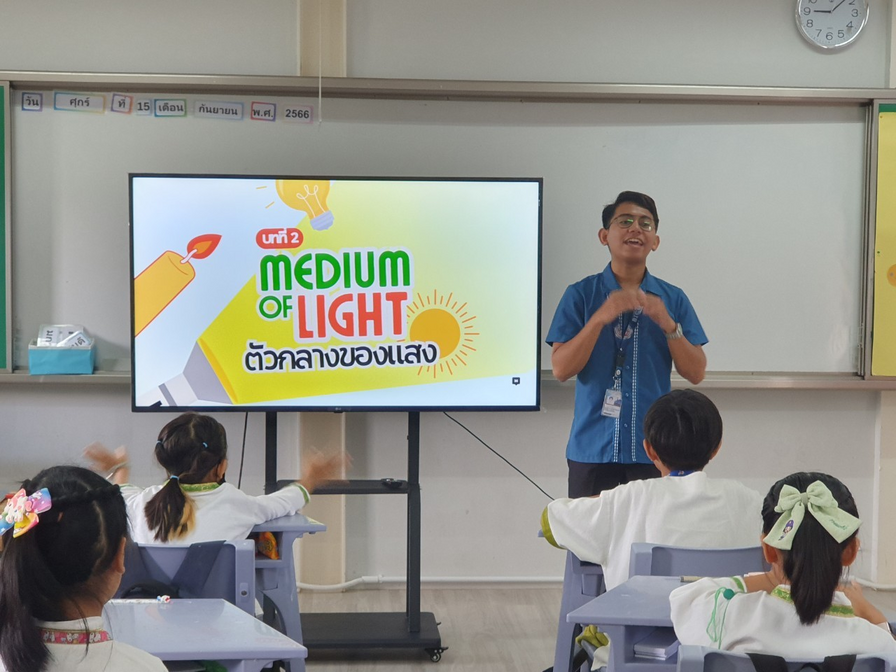
Integrating CLIL in presentation and instruction
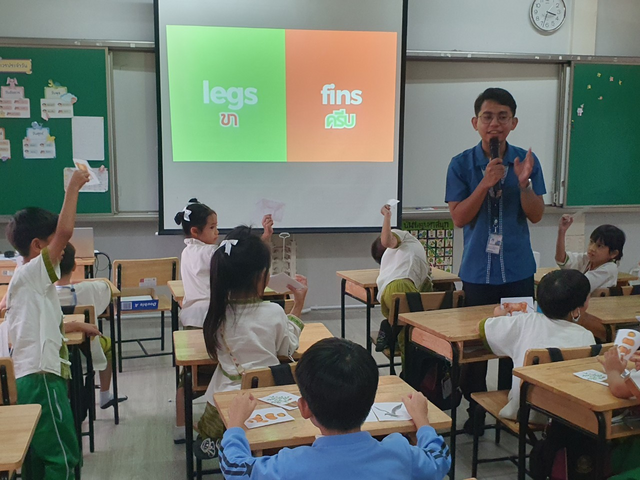

CLIL in action


Sample slides of my presentation wherein the English texts have a subtitle of Thai translations
c
re
memories
khòp kun khrap!
ACKNOWLEDGMENT
maraming
salamat po!


